new posts in all blogs
Viewing: Blog Posts Tagged with: Funny Books, Most Recent at Top [Help]
Results 1 - 25 of 129
How to use this Page
You are viewing the most recent posts tagged with the words: Funny Books in the JacketFlap blog reader. What is a tag? Think of a tag as a keyword or category label. Tags can both help you find posts on JacketFlap.com as well as provide an easy way for you to "remember" and classify posts for later recall. Try adding a tag yourself by clicking "Add a tag" below a post's header. Scroll down through the list of Recent Posts in the left column and click on a post title that sounds interesting. You can view all posts from a specific blog by clicking the Blog name in the right column, or you can click a 'More Posts from this Blog' link in any individual post.
 Every single list that appears on this blog is subjective. I mean, here I am declaring stuff to be great based entirely on a single solitary opinion: my own. That’s okay when you’re talking alphabet books or readalouds, but humor is a far trickier matter. There are a LOT of humorous picture books that come out in a single year and this list is just a miniscule smattering of the whole. That said, these are the books that really retained a strong grip on my brain after reading them. There were other funny books out in 2016. I’m just particularly partial to the following. I’m pleased with the number of funny women representing here too. After all, if there’s one thing I know something about, it’s funny girls.
Every single list that appears on this blog is subjective. I mean, here I am declaring stuff to be great based entirely on a single solitary opinion: my own. That’s okay when you’re talking alphabet books or readalouds, but humor is a far trickier matter. There are a LOT of humorous picture books that come out in a single year and this list is just a miniscule smattering of the whole. That said, these are the books that really retained a strong grip on my brain after reading them. There were other funny books out in 2016. I’m just particularly partial to the following. I’m pleased with the number of funny women representing here too. After all, if there’s one thing I know something about, it’s funny girls.
2016 Funny Picture Books
Best Frints in the Whole Universe by Antoinette Portis
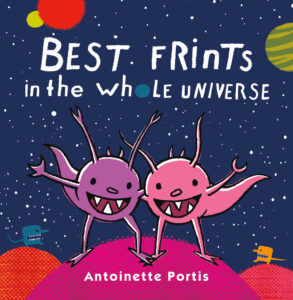
Kind of like Du Iz Tak? but with a slight increase in English, this alien friendship story earns its humor stripes when it explains those little socially awkward moments like when you accidentally/on purpose bite off your best frint’s tail.
Dylan the Villain by K.G. Campbell
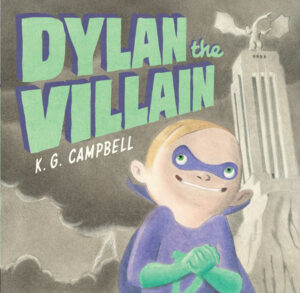
First off, I love that in this world, villainy is genetic but is capable of skipping generations. Second, I love that our anti-hero’s antagonist is a girl with a killer purple eyepatch. Having super villains as heroes isn’t a new idea in the movies, but in picture books it doesn’t happen all that often. I, for one, am hoping for more Dylan in the future.
The Happiest Book Ever! by Bob Shea

Every book should have a frog in it. There’s a lot of happy happy joy joy to this book mixed with a tincture of Monty Python. Could you ask for anything more?
A Hungry Lion by Lucy Ruth Cummins
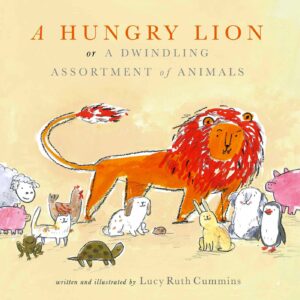
The subtitle, which is distinctly Edward Gorey-esque, gives you an indication of what kind of funny book this is. You know what it reminds me of? The movie Alien. And, naturally, the turtle is Ripley. Oh, like you hadn’t considered it before.
I Don’t Want To Be Big by Dev Petty, ill. Mike Boldt
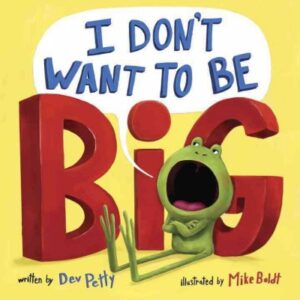
I didn’t bother to do this with any of the other books on this list, but for this one, I wanted to show you my favorite gag. The idea is that the frog is arguing that growing up is a bum rap. His dad tries to come up with reasons why it should still be done. So we get this:
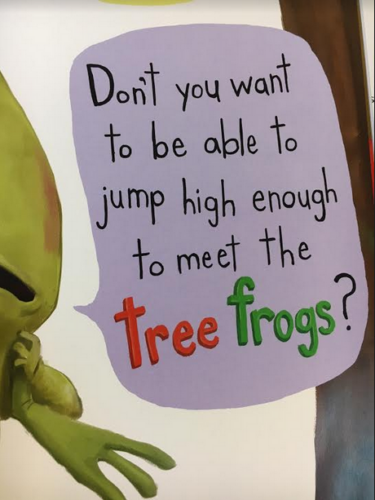
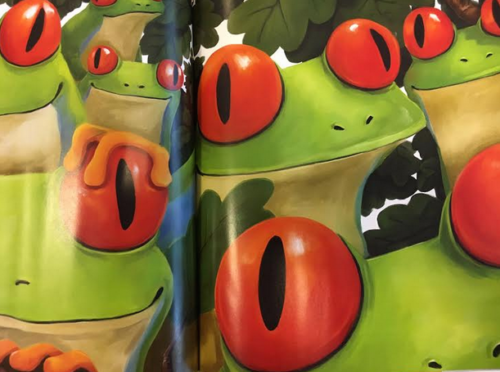
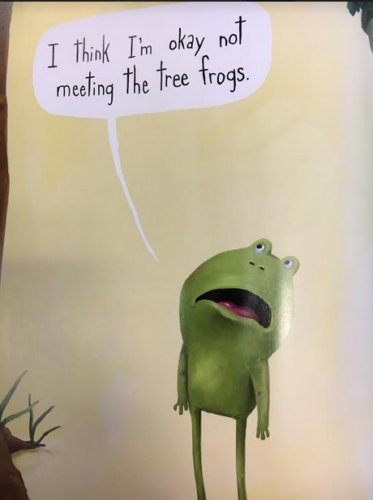
The defense rests, your honor.
Is That Wise Pig? by Jan Thomas
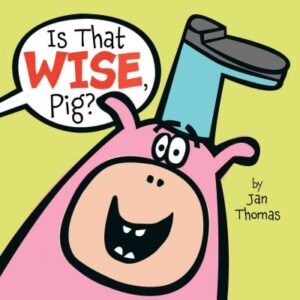
I mean, there’s a boot on that pig’s head. A boot! Just sayin’.
King Baby by Kate Beaton
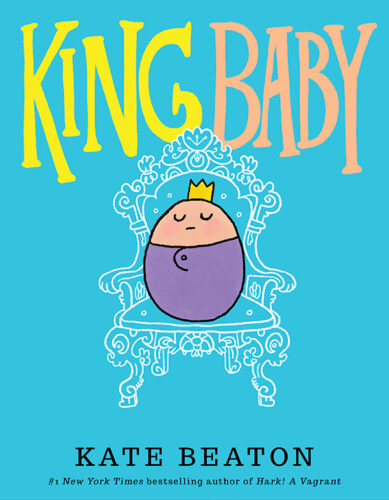
We’re getting there. Beaton’s starting out slow with her picture books. This one’s funnier than her last, and at the rate she’s going she should be able to make a perfectly Beaton-esque one soon. Though, to be frank, this next book on my list felt like Kate Beaton but not by Kate Beaton:
Leave Me Alone! by Vera Brosgol
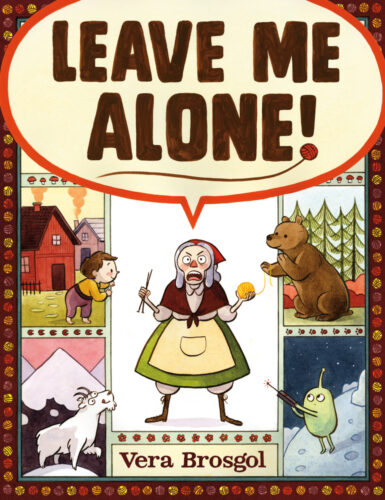
Did you notice that it appeared on the NPR Book Concierge for 2016? Did you notice who blurbed it? Ah, thank you. Ah, thank you.
Monsters Go Night-Night by Aaron Zenz
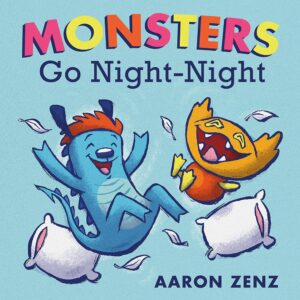
Proving yet again that I have the sense of humor of a 5-year-old. But let’s be frank. That potty joke? The best misdirection I’ve seen on a page in a long time.
Next to You: A Book of Adorableness by Lori Haskins Houran, ill. Sydney Hanson
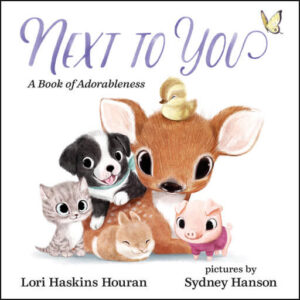
I’m going to stand by this one as a humor book. It throws you off with its big-eyed animals and then you get the snarky text. Seriously funny.
Oh No, Astro! by Matt Roeser, ill. Brad Woodard
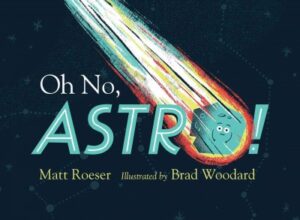
Proof positive that you can be a funny book and a visually stunning one all at the same time.
Penguin Problems by Jory John, ill. Lane Smith
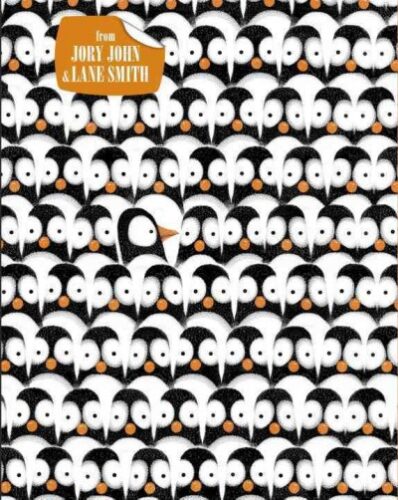
Misanthropic penguins make for comedy gold. Every good author worth his or her salt knows that.
Poor Little Guy by Elanna Allen
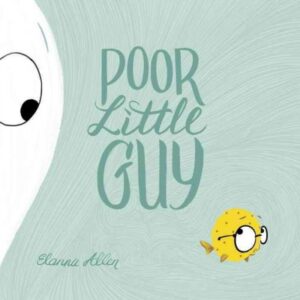
Of all the books on my list today, I worry that this one is the most underrated. Did you ever get a chance to read it? I feel like it got buried under a lot of other publications, but for sheer visual storytelling and gags it’s an out-and-out winner. I. Just. Love. It. Love it, love it, love it.
President Squid by Aaron Reynolds, ill. Sara Varon
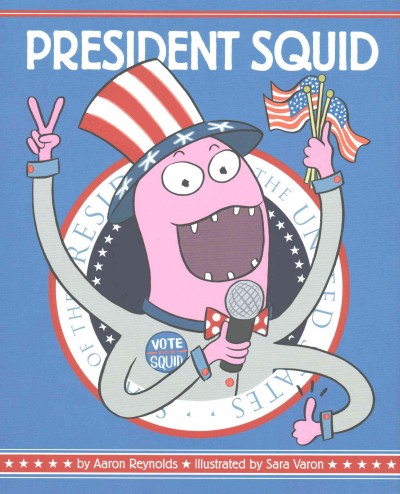
Okay. Your mission, should you choose to accept it, is to watch this video at the 18:30 mark. That’s when Aaron reads from his book and it’s the funniest reading ever you did see.
Pug Man’s 3 Wishes by Sebastian Meschenmoser
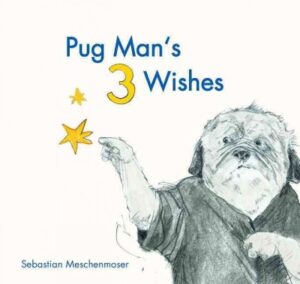
He’s the funniest German picture book author/illustrator of all time. Granted, the competition may not be particularly intense . . .
Quit Calling Me a Monster! by Jory John, ill. Bob Shea
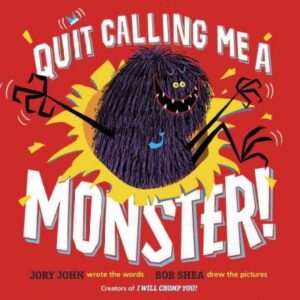
Both Jory and Bob are on this list twice. And I’d take off one of their books apiece, honest I would, if it weren’t for the fact that the monster in this book is named Floyd Patterson. I mean, I’m only human, after all.
Super Happy Magic Forest by Matty Long
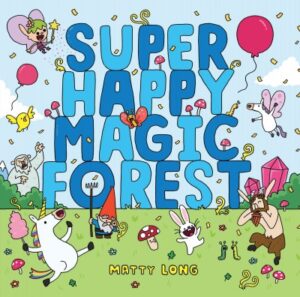
2016 was a good year for picture books making fun of fantasy tropes. I honestly think this book would appeal to any kid, though, regardless of their interest in swords and sorcery. Plus there’s a Gollum reference on one of the pages, so kudos there.
This is My Book by Mark Pett (and no one else)
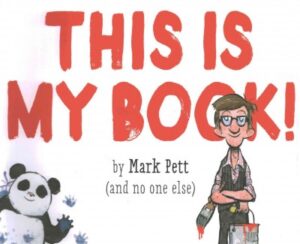
I almost swallowed my gum when I saw that the author of this book was Mark Pett. Pett? A subdued author/illustrator by and large, this book is a huge departure for him. A huge, hilarious departure. We could all use a mischievous panda in our lives.
A Voyage in the Clouds: The (Mostly) True Story of the First International Flight by Balloon in 1785 by Matthew Olshan, ill. Sophie Blackall
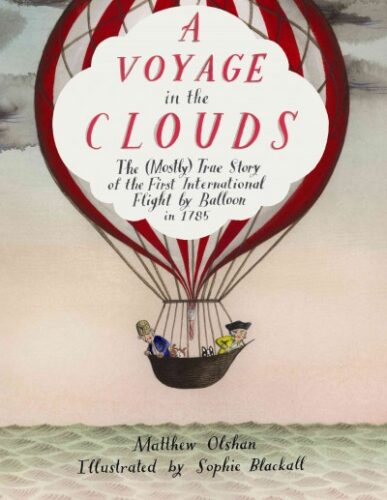
Somehow the fact that it’s all based on a true story (the iron vest, the peeing off the boat, the landing in their underwear, etc.) makes it all the funnier. Plus the fact that Ms. Sophie Blackall is in Funny Girl in 2017 is just the icing on the cake.
Who What Where? by Olivier Tallec
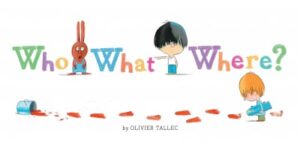
It’s a sequel but I don’t rightly care. It’s a hilarious sequel and may even improve upon the original.
Interested in the other upcoming lists of this month? Here’s the schedule so that you can keep checking back:
December 1 – Board Books
December 2 – Board Book Adaptations
December 3 – Nursery Rhymes
December 4 – Picture Book Readalouds
December 5 – Rhyming Picture Books
December 6 – Alphabet Books
December 7 – Funny Picture Books
December 8 – Calde-Nots
December 9 – Picture Book Reprints
December 10 – Math Picture Books
December 11 – Bilingual Books
December 12 – International Imports
December 13 – Books with a Message
December 14 – Fabulous Photography
December 15 – Fairy Tales / Folktales
December 16 – Oddest Books of the Year
December 17 – Older Picture Books
December 18 – Easy Books
December 19 – Early Chapter Books
December 20 – Graphic Novels
December 21 – Poetry
December 22 – Fictionalized Nonfiction
December 23 – American History
December 24 – Science & Nature Books
December 25 – Transcendent Holiday Titles
December 26 – Unique Biographies
December 27 – Nonfiction Picture Books
December 28 – Nonfiction Chapter Books
December 29 – Novel Reprints
December 30 – Novels
December 31 – Picture Books

Just look at this cute little hamster on the cover--but wait, the title says it's ferocious?!? Yes, my friends, things are not always as they seem. And you better listen when your teacher says to be careful...
Ferocious Fluffity: A mighty bite-y class pet
by Erica S. Perl
illustrated by Henry Cole
Abrams, 2016
Your local library
Amazon
ages 4-8
Right from the get-go, readers will know that Erica Perl wants them to question whether Fluffity is indeed as cute as her name suggests. And her subtitle, "a mighty bite-y class pet" gives a clue about the way she plays with rhymes. The cover only hints how uproariously funny this story is--just wait till Fluffity gets loose.
Mr. Drake's second grade class is so excited when Fluffity arrives as their new class pet. Kids call out, "She's so tiny." "She's so sweet!"/ "Such cute whiskers!" "Such cute feet!" Mr. Drake warns them that they have to wait to hold her, but every kid is yearning to hold her.
 |
"The box was big and tall and wide.
Could there be a pet inside?" |
"Look--don't touch," warns Mr. Drake, "Though the children nodded yes, / Did they mean it? Take a guess." Just a few days later, Mr. Drake is late and the class decides to take out Fluffity, passing her around. Right then, the class discovers her true FEROCIOUS nature--biting and chasing everyone down the hall and into the library!
 |
"No one's sure who held her first.
Things got bad. Then things got worse." |
Erica Perl's rhyming text is delightful to read aloud, and kids will love how the pacing adds to the excitement. I'd recommend this either as a read-aloud, or for a developing reader to read. They rhymes remind me a lot of Dr. Seuss's beginning readers. As Tasha Sackler says in her review at
Waking Brain Cells,"Perl handles her rhyme with panache, using it to up the frenzied action and to increase the humor as well. The rhyme adds a galloping pace to the book that is wonderful as well as making it a treat to read aloud."
Henry Cole's illustrations amplify the humor, with student's cartoon faces and astonished expressions. Kids will love how he contrasts Fluffity's tiny size to the kids' panicked reactions. His diverse classroom, with its African American teacher, make this even more relatable.
 |
"First she chased them down the hall,
Through the gym, and up a wall." |
So my young friends, here's hoping that you listen to your teacher's instructions. You can't always judge a book by its cover, or a pet by its size. (PS: Mr. Cole, I adore the cover and think kids will too.)
Illustrations copyright © Henry Cole, 2016, shared with permission of the publisher. The review copies were kindly sent by the publisher, Abrams Books for Young Readers. If you make a purchase using the Amazon links on this site, a small portion goes to Great Kid Books. Thank you for your support.
©2016 Mary Ann Scheuer, Great Kid Books
Reading can be tough work, so I often try to give developing readers a big dose of humor to keep them engaged in stories. These new readers also need a story that develops in a predictable way, so they can build a solid understanding of the plot and characters. The Infamous Ratsos, a new chapter book, hits the sweet spot--providing humor and a story that's engaging, but easy to follow.
The Infamous Ratsos
by Kara LaReau
illustrated by Matt Myers
Candlewick, 2016
Your local library
Amazon
ages 6-9
Louie and Ralphie want to be tough just like their dad, Big Lou. "There are two kinds of people in this world," Big Lou likes to say. "Those who are tough, and those who are soft." Louie and Ralphie decide they're going to show everyone just how tough they are.
 |
| "Let's do something," Louie says to Ralphie. "Something to make us look tough." |
The brothers decide to play mean tricks on other people in order to look tough. On the playground, they steal big badger's hat on the playground, trying to look like playground bullies. But it turns out that they've rescued Tiny Crawley's hat which the badger (the real bully) had stolen. Nothing ever comes out quite like they plan--instead of doing dastardly deeds, they help people.
"That was nice of you boys, sticking up for Tiny," says Miss Beavers.
"We're not nice, we're TOUGH," Louie tries to explain...
But no one is listening. Instead, everyone on the playground is looking at the Ratso brothers like their heroes.
Short chapters, frequent illustrations and large font make this book well suited for developing readers. In four successive chapters, Ralphie and Louie try to do mean things and show everyone just how bad they are. Young readers will enjoy finding how things will turn out badly for the brothers, and soon will start predicting their mishaps.
I especially enjoyed the ending, when their dad finds out about how they've been helping people at school and in the neighborhood. LaReau has laid the groundwork--Big Lou's reaction isn't just that of a tough guy. He has a soft heart, too, especially when he thinks about Mama Ratso, who's been "gone" for a little while now.
"Being tough all the time is so... so... tough," says their father. He puts his arms around the Ratso brothers and pulls them close.
This beginning chapter book, similar in difficulty to a Frog and Toad book, will engage developing readers with its humor and twists, providing nice moments for talking about what the brothers learn in the story. A great choice for late 1st grade or early 2nd grade readers. Here's hoping for more trouble from the Louie and Ralphie.
Illustrations copyright © Matt Myers, 2016, shared with permission of the publisher. The review copies were kindly sent by the publisher, Candlewick. If you make a purchase using the Amazon links on this site, a small portion goes to Great Kid Books. Thank you for your support.
©2016 Mary Ann Scheuer, Great Kid Books
Reading can be tough work, so I often try to give developing readers a big dose of humor to keep them engaged in stories. These new readers also need a story that develops in a predictable way, so they can build a solid understanding of the plot and characters. The Infamous Ratsos, a new chapter book, hits the sweet spot--providing humor and a story that's engaging, but easy to follow.
The Infamous Ratsos
by Kara LaReau
illustrated by Matt Myers
Candlewick, 2016
Your local library
Amazon
ages 6-9
Louie and Ralphie want to be tough just like their dad, Big Lou. "There are two kinds of people in this world," Big Lou likes to say. "Those who are tough, and those who are soft." Louie and Ralphie decide they're going to show everyone just how tough they are.
 |
| "Let's do something," Louie says to Ralphie. "Something to make us look tough." |
The brothers decide to play mean tricks on other people in order to look tough. On the playground, they steal big badger's hat on the playground, trying to look like playground bullies. But it turns out that they've rescued Tiny Crawley's hat which the badger (the real bully) had stolen. Nothing ever comes out quite like they plan--instead of doing dastardly deeds, they help people.
"That was nice of you boys, sticking up for Tiny," says Miss Beavers.
"We're not nice, we're TOUGH," Louie tries to explain...
But no one is listening. Instead, everyone on the playground is looking at the Ratso brothers like their heroes.
Short chapters, frequent illustrations and large font make this book well suited for developing readers. In four successive chapters, Ralphie and Louie try to do mean things and show everyone just how bad they are. Young readers will enjoy finding how things will turn out badly for the brothers, and soon will start predicting their mishaps.
I especially enjoyed the ending, when their dad finds out about how they've been helping people at school and in the neighborhood. LaReau has laid the groundwork--Big Lou's reaction isn't just that of a tough guy. He has a soft heart, too, especially when he thinks about Mama Ratso, who's been "gone" for a little while now.
"Being tough all the time is so... so... tough," says their father. He puts his arms around the Ratso brothers and pulls them close.
This beginning chapter book, similar in difficulty to a Frog and Toad book, will engage developing readers with its humor and twists, providing nice moments for talking about what the brothers learn in the story. A great choice for late 1st grade or early 2nd grade readers. Here's hoping for more trouble from the Louie and Ralphie.
Illustrations copyright © Matt Myers, 2016, shared with permission of the publisher. The review copies were kindly sent by the publisher, Candlewick. If you make a purchase using the Amazon links on this site, a small portion goes to Great Kid Books. Thank you for your support.
©2016 Mary Ann Scheuer, Great Kid Books

By:
Betsy Bird,
on 9/4/2016
Blog:
A Fuse #8 Production
(
Login to Add to MyJacketFlap)
JacketFlap tags:
Reviews,
historical fiction,
Louise Erdrich,
funny books,
Harper Collins,
Best Books,
middle grade historical fiction,
Best Books of 2016,
2016 reviews,
Reviews 2016,
2016 middle grade historical fiction,
2016 funny books,
Add a tag
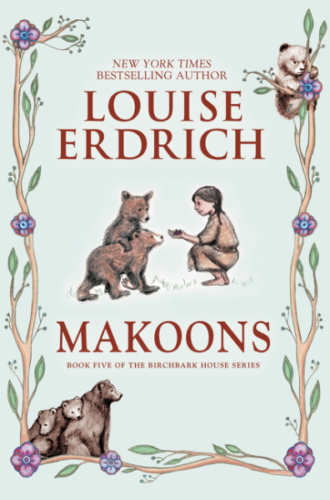 Makoons
Makoons
By Louise Erdrich
Harper Collins
$16.99
ISBN: 9780060577933
Ages 7-12
On shelves now
They say these days you can’t sell a novel for kids anymore without the book having some kind of “sequel potential”. That’s not really true, but there are a heck of a lot of series titles out there for the 7 to 12-year-old set, that’s for sure. New series books for children are by their very definition sort of odd for kids, though. If you’re an adult and you discover a new series, waiting a year or two for the next book to come out is a drop in the bucket. Years fly by for grown-ups. The wait may be mildly painful but it’s not going to crush you. But series for kids? That’s another matter entirely. Two years go by and the child has suddenly become an entirely different person. They may have switched their loyalties from realistic historical fiction to fantasy or science fiction or (heaven help us) romance even! It almost makes more sense just to hand them series that have already completed their runs, so that they can speed through them without breaking the spell. Almost makes more sense . . . but not quite. Not so long as there are series like “The Birchbark House Series” by Louise Erdrich. It is quite possibly the only historical fiction series currently underway for kids that has lasted as long as seventeen years and showing no sign of slowing down until it reaches its conclusion four books from now, Erdrich proves time and time again that she’s capable of ensnaring new readers and engaging older ones without relying on magic, mysteries, or post-apocalyptic mayhem. And if she manages to grind under her heel a couple stereotypes about what a book about American Indians in the past is “supposed” to be (boring/serious/depressing) so much the better.
Chickadee is back, and not a second too soon. Had he been returned to his twin brother from his kidnapping any later, it’s possible that Makoons would have died of the fever that has taken hold of his body. As it is, Chickadee nurses his brother back to health, but not before Makoons acquires terrifying visions of what is to come. Still, there’s no time to dwell on that. The buffalo are on the move and his family and tribe are dedicated to sustaining themselves for the winter ahead. There are surprises along the way as well. A boasting braggart by the name of Gichi Noodin has joined the hunt, and his posturing and preening are as amusing to watch as his mistakes are vast. The tough as nails Two Strike has acquired a baby lamb and for reasons of her own is intent on raising it. And the twin brothers adopt a baby buffalo of their own, though they must protect it against continual harm. All the while the world is changing for Makoons and his family. Soon the buffalo will leave, more settlers will displace them, and three members of the family will leave, never to return. Fortunately, family sustains, and while the future may be bleak, the present has a lot of laughter and satisfaction waiting at the end of the day.
While I have read every single book in this series since it began (and I don’t tend to follow any other series out there, except possibly Lockwood & Co.) I don’t reread previous books when a new one comes out. I don’t have to. Neither, I would argue, would your kids. Each entry in this series stands on its own two feet. Erdrich doesn’t spend inordinate amounts of time catching the reader up, but you still understand what’s going on. And you just love these characters. The books are about family, but with Makoons I really felt the storyline was more about making your own family than the family you’re born into. At the beginning of this book Makoons offers the dire prediction that he and his brother will be able to save their family members, but not all of them. Yet by the story’s end, no matter what’s happened, the family has technically only decreased by two people, because of the addition of another.
Erdrich has never been afraid of filling her books with a goodly smattering of death, dismemberment, and blood. I say that, but these do not feel like bloody books in the least. They have a gentleness about them that is remarkable. Because we are dealing with a tribe of American Indians (Ojibwe, specifically) in 1866, you expect this book to be like all the other ones out there. Is there a way to tell this story without lingering on the harm caused by the American government to Makoons, his brother, and his people? Makoons and his family always seem to be outrunning the worst of the American government’s forces, but they can’t run forever. Still, I think it’s important that the books concentrate far more on their daily lives and loves and sorrows, only mentioning the bloodthirsty white settlers on occasion and when appropriate. It’s almost as if the reader is being treated in the same way as Makoons and his brother. We’re getting some of the picture but we’re being spared its full bloody horror. That is not to say that this is a whitewashed narrative. It isn’t at all. But it’s nice that every book about American Indians of the past isn’t exactly the same. They’re allowed to be silly and to have jokes and fun moments too.
That humor begs a question of course. Question: When is it okay to laugh at a character in a middle grade novel these days? It’s not a simple question. With a high concentration on books that promote kindness rather than bullying, laughing at any character, even a bad guy, is a tricky proposition. And that goes double if the person you’re laughing at is technically on your side. Thank goodness for self-delusion. As long as a character refuses to be honest with him or herself, the reader is invited to ridicule them alongside the other characters. It may not be nice, but in the world of children’s literature it’s allowed. So meet Gichi Noodin, a pompous jackass of a man. This is the kind of guy who could give Narcissus lessons in self-esteem. He’s utterly in love with his own good looks, skills, you name it. For this reason he’s the Falstaff of the book (without the melancholy). He serves a very specific purpose in the book as the reader watches his rise, his fall, and his redemption. It’s not very often that the butt of a book’s jokes is given a chance to redeem himself, but Gichi Noodin does precisely that. That storyline is a small part of the book, smaller even than the tale of Two Strike’s lamb, but I loved the larger repercussions. Even the butt of the joke can save the day, given the chance.
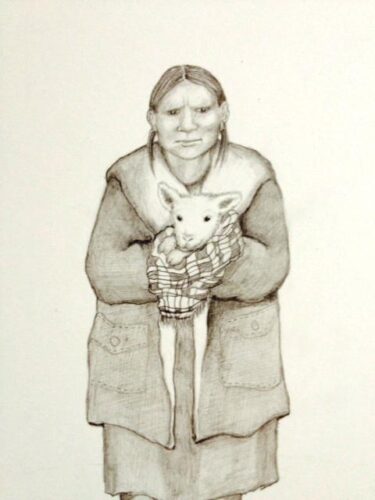 As with all her other books Erdrich does a E.L. Konigsburg and illustrates her own books (and she can even do horses – HORSES!). Her style is, as ever, reminiscent of Garth Williams’ with soft graphite pencil renderings of characters and scenes. These are spotted throughout the chapters regularly, and combined with the simplicity of the writing they make the book completely appropriate bedtime reading for younger ages. The map at the beginning is particularly keen since it not only highlights the locations in each part of the story but also hints at future storylines to come. Of these pictures the sole flaw is the book jacket. You see the cover of this book is a touch on the misleading side since at no point in this story does Makoons ever attempt to feed any baby bears (a terrible idea, namesake or no). Best to warn literal minded kids from the start that that scene is not happening. Then again, this appears to be a scene from the first book in the series, The Birchbark House, where Makoons’ mother Omakayas feeds baby bears as a girl. Not sure why they chose to put it on the cover this book but it at least explains where it came from.
As with all her other books Erdrich does a E.L. Konigsburg and illustrates her own books (and she can even do horses – HORSES!). Her style is, as ever, reminiscent of Garth Williams’ with soft graphite pencil renderings of characters and scenes. These are spotted throughout the chapters regularly, and combined with the simplicity of the writing they make the book completely appropriate bedtime reading for younger ages. The map at the beginning is particularly keen since it not only highlights the locations in each part of the story but also hints at future storylines to come. Of these pictures the sole flaw is the book jacket. You see the cover of this book is a touch on the misleading side since at no point in this story does Makoons ever attempt to feed any baby bears (a terrible idea, namesake or no). Best to warn literal minded kids from the start that that scene is not happening. Then again, this appears to be a scene from the first book in the series, The Birchbark House, where Makoons’ mother Omakayas feeds baby bears as a girl. Not sure why they chose to put it on the cover this book but it at least explains where it came from.
It is interesting that the name of this book is Makoons since Chickadee shares as much of the spotlight, if not a little more so, than his sickly brother. That said, it is Makoons who has the vision of the future, Makoons who offers the haunting prediction at the story’s start, and Makoons who stares darkly into an unknown void at the end, alone in the misery he knows is certain to come. Makoons is the Cassandra of this story, his predictions never believed until they are too late. And yet, this isn’t a sad or depressing book. The hope that emanates off the pages survives the buffalos’ sad departure, the sickness that takes two beloved characters, and the knowledge that the only thing this family can count on in the future is change. But they have each other and they are bound together tightly. Even Pinch, that trickster of previous books, is acquiring an odd wisdom and knowledge of his own that may serve the family well into the future. Folks often recommend these books as progressive alternatives to Laura Ingalls Wilder’s Little House books, but that’s doing them a disservice. Each one of these titles stands entirely on its own, in a world of its own making. This isn’t some sad copy of Wilder’s style but a wholly original series of its own making. The kid who starts down the road with this family is going to want to go with them until the end. Even if it takes another seventeen years. Even if they end up reading the last few books to their own children. Whatever it takes, we’re all in this together, readers, characters, and author. Godspeed, Louise Erdrich.
For ages 7-12
Source: Final copy sent from publisher for review.
Professional Reviews:
Other Blog Reviews: BookPage


By:
Betsy Bird,
on 8/5/2016
Blog:
A Fuse #8 Production
(
Login to Add to MyJacketFlap)
JacketFlap tags:
Best Books of 2016,
2016 picture books,
2016 reviews,
Reviews 2016,
2016 funny books,
2016 funny picture books,
Reviews,
picture books,
knitting,
funny books,
Roaring Brook,
Best Books,
macmillan,
funny picture books,
Vera Brosgol,
Add a tag
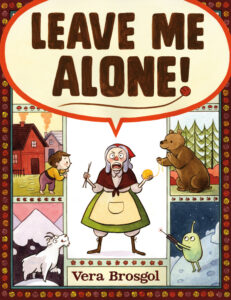 Leave Me Alone!
Leave Me Alone!
By Vera Brosgol
Roaring Brook Press (an imprint of Macmillan)
$17.99
ISBN: 9781626724419
Ages 4-7
On shelves September 13th
Knitting. It shouldn’t be so hard. I say this as the grown daughter of a chronic knitterer (not a word). I grew up neck deep in roving. I know the difference between a gossip wheel and a walking wheel (these are different spinning wheels). I know that if you want a permanent non-toxic dye for wool you use Kool-aid, that wool straight from the sheep is incredibly oily, and that out there are people who have turned the fur of their dogs and cats into sweaters. Yet the simplest act of knitting is lost on a good 50% of the children’s book illustrators out there that year after year can’t even be bothered to figure out which way the knitting needles are supposed to go. Down, people. The ends go down. In 2016 alone we’ve seen books like Maggie McGillicuddy’s Eye for Trouble get it wrong. Fortunately 2016 has also seen correctly positioned needles in Cat Knit, Ned the Knitting Pirate, and the greatest knitting related picture book I’ve seen to date Leave Me Alone! A superb readaloud of unparalleled visual humor, this is a knitting picture book par excellence and a pretty darn good original folktale too, come to think of it. Allowing for the occasional alien, of course.
“Once there was an old woman. She lived in a small village in a small house . . . with a very big family.” And by big family we mean big extended family. One gets the feeling that all her grown kids just sort of dump their own children on her, because there are thirty small grandchildren running amok in her home. Winter is coming soon and the old woman is keen on getting some knitting done for her extended brood. Trouble is, knitting and small children do NOT mix. So she picks up her stuff and goes into the deep, dark forest. That’s where the bear family finds her. So she goes to the mountains. Where the goats find her. Next it’s the moon. Where curious aliens find her. That leaves a wormhole where the void turns out to be her saving. Only problem is, it’s lonely in the void. Once her work is done, she heads back and when she sees her grandkids again, she doesn’t have to say a single word.
Here is the crazy thing about this book: It’s Vera Brosgol’s first picture book. I say that this is crazy because this does not read like a debut. This reads like Brosgol has been churning out picture books for decades, honing her skill, until finally at long last she’s produced a true diamond. But no. Some people get all the talent apparently. This is not, I should not, Ms. Brosgol’s first book in general. Her graphic novel Anya’s Ghost got a fair amount of attention a couple of years ago, and it was good. But nothing about that title prepared me for Leave Me Alone! Here we have a pitch perfect combination of text and image. If you were to read this book to someone without mentioning the creator, I don’t think there’s a soul alive who wouldn’t assume that the author and illustrator are one and the same. This is due largely to the timing. Just open the book to the first page. Examine the old woman on that page. Turn the page. Now look how that same woman has been transposed to a new setting and her expression has changed accordingly. Basically this sold the book to me right from the start.
 Funny picture books. For an author, creating a picture book that is funny means doing two things at once. You must appeal to both children and parents with your humor at the same time. Do you know how hard that is? Making something that a five-year-old thinks is funny that is also humorous to their parental unit is such a crazy balancing act that most picture book creators just fall on one side of the equation or the other. Make it funny only to adults and then you may as well just forget about the kids altogether (see: A Child’s First Book of Trump). Opt instead to only make it funny to kids and you doom the grown-ups to reading something they’d rather eat hot nails than read again (see: Walter the Farting Dog). But I honestly believe Brosgol has found the golden mean. Both adults and kids will find moments like the older sister stuffing a yarn ball in her brother’s mouth or the presence of the samovar (even in a wormhole) or the bear tentatively touching its nose after the old woman’s vigorous poke very funny indeed.
Funny picture books. For an author, creating a picture book that is funny means doing two things at once. You must appeal to both children and parents with your humor at the same time. Do you know how hard that is? Making something that a five-year-old thinks is funny that is also humorous to their parental unit is such a crazy balancing act that most picture book creators just fall on one side of the equation or the other. Make it funny only to adults and then you may as well just forget about the kids altogether (see: A Child’s First Book of Trump). Opt instead to only make it funny to kids and you doom the grown-ups to reading something they’d rather eat hot nails than read again (see: Walter the Farting Dog). But I honestly believe Brosgol has found the golden mean. Both adults and kids will find moments like the older sister stuffing a yarn ball in her brother’s mouth or the presence of the samovar (even in a wormhole) or the bear tentatively touching its nose after the old woman’s vigorous poke very funny indeed.
And let’s not downplay the writing here. There is serious readaloud potential with this book. I’ll level with you. In a given year you’ll see hundreds and hundreds of picture books published. Of these, a handful make for ideal readalouds. I’m not talking about books a parent can read to a child. I’m talking about books you can read to large groups, whether you’re a teacher, a librarian, or some poor parental schmuck who got roped into reading aloud to a group of fidgeting small fry. Few books are so good that anyone and everyone can enrapture an audience with them when read out loud. But Leave Me Alone! may be one of those rare few. Those beautiful butterflies. Those little jewels. The language mimics that of classic folktales, bandying about phrases like, “deep, dark forest”. And there are so many interactive possibilities. You could teach the kids how to yell out the phrase “Leave me alone!” all together at the same time, for example.
 As for the art, it’s perfect. There’s a kind of Kate Beaton feel to it (particularly when babies or goats have full balls of yarn stuffed into their mouths). As I mentioned before, Brosgol knows which way knitting needles are supposed to lie, and better still she knows how to illustrate thirty different, and very realistically rendered sweaters, at the story’s end. There are also some clever moments that you’ll notice on a third or fourth read. For example, the very first time the woman yells, “Leave me alone!” she’s exiting the gates to her home and her children’s homes. The only people who hear her are her grown children, which means we don’t have to worry about small ears hearing such a caustic phrase from their grandma. Smart. And did you see that the twins get identical sweaters at the end of the book? Finally, there are the visual gags. The goats that surreptitiously followed the old woman to the moon, nibbling on a moon man’s scanner, for example.
As for the art, it’s perfect. There’s a kind of Kate Beaton feel to it (particularly when babies or goats have full balls of yarn stuffed into their mouths). As I mentioned before, Brosgol knows which way knitting needles are supposed to lie, and better still she knows how to illustrate thirty different, and very realistically rendered sweaters, at the story’s end. There are also some clever moments that you’ll notice on a third or fourth read. For example, the very first time the woman yells, “Leave me alone!” she’s exiting the gates to her home and her children’s homes. The only people who hear her are her grown children, which means we don’t have to worry about small ears hearing such a caustic phrase from their grandma. Smart. And did you see that the twins get identical sweaters at the end of the book? Finally, there are the visual gags. The goats that surreptitiously followed the old woman to the moon, nibbling on a moon man’s scanner, for example.
I’ve seen a fair amount of hand wringing over the years over whether or not a children’s book can contain a protagonist that is not, in fact, a child, an animal, or an inanimate object rendered animate. Which is to say, are children capable of identifying with adults? More precisely, an adult who just wants to be alone for two seconds? The answer is swift and sure. Certainly they can. Particularly if the kid reading this book is an older sibling. The concept of being alone, of craving some time for one’s own self, is both familiar and foreign to a lot of kids. I’m reminded of the Frog & Toad story “Alone” from Days With Frog and Toad where Toad has a dark morning of the soul when he learns that Frog would like to have some alone time. Because of all of this, we see a lot of picture books where a character wants to be alone, has difficulty getting that “me time”, and eventually decides that companionship is the way to go (Octopus Alone, A Visitor for Bear, etc.). A few celebrate the idea (All Alone] by Kevin Henkes) but generally speaking parents use these books to convince their perhaps less than socially adept children that there are benefits to the concept of friendship. And there is a place in the world for such books. Fortunately there is also a place in the world for this book.
Folks sometimes talk to me about current trends in picture books. Sometimes they’re trying to figure out what the “next big thing” might be. But of course, the best picture books are the ones that at their core don’t really resemble anything but themselves. Leave Me Alone! isn’t typical. It reads aloud to big crowds of kids with great ease, lends itself to wonderful expressions, pops off the page, and will make anyone of any age laugh at some point. It’s a great book, and if I have to write another 500 words to convince you of it, I can do so. But why delay you from seeing it any longer? Go. Seek. Find. Read. Savor.
On shelves September 13th.
Like This? Then Try:
Source: Galley sent by publisher for review.
Misc: Cute promotion or THE CUTEST PROMOTION? As you can see from this Bustle interview, Ms. Brosgol knit twenty-five teeny tiny sweaters to promote this book. I steal the image for my own nefarious purposes and show it to you here:



By:
Betsy Bird,
on 7/21/2016
Blog:
A Fuse #8 Production
(
Login to Add to MyJacketFlap)
JacketFlap tags:
Reviews,
middle grade fantasy,
funny books,
Best Books,
abrams,
Amulet Books,
Amy Ignatow,
middle school novels,
middle school fantasy,
funny fantasy,
Best Books of 2016,
Reviews 2016,
2016 middle grade fantasy,
2016 middle grade fiction,
2016 funny books,
2016 middle school fiction,
Add a tag
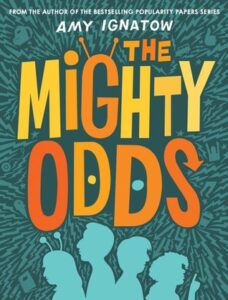 The Mighty Odds
The Mighty Odds
By Amy Ignatow
Amulet Books (an imprint of Abrams)
$15.95
ISBN: 978-1-4197-1271-5
Ages 10 and up
On shelves September 13th
If you could have one weird superpower, what would it be? Not a normal one, mind you. We’re not doing a flight vs. invisibility discussion here. The power would have to be extraordinary and odd. If it’s completely useless, all the better. Me? I think I’d like my voice to be same as the voice you hear in your head when you’re reading something. You know that voice? That would be my superpower. A good author can crank this concept up to eleven if they want to. Enter, Amy Ignatow. She is one of the rare authors capable of making me laugh out loud at the back covers of her books. For years she’s penned The Popularity Papers to great success and acclaim. Now that very realistic school focus is getting a bit of a sci-fi/fantasy kick in the pants. In The Mighty Odds, Ignatow takes the old misfits-join-together-to-save-the-world concept and throws in a lot of complex discussions of race, middle school politics, bullying, and good old-fashioned invisible men. The end result is a 21st century superhero story for kids that’s keeps you guessing every step of the way.
A school bus crashes in a field. No! Don’t worry! No one is killed (that we can tell). And the bus was just full of a bunch of disparate kids without any particular connection to one another. There was the substitute teacher and the bus driver (who has disappeared). And there was mean girl Cookie (the only black girl in school and one of the most popular), Farshad (nicknamed “Terror Boy” long ago by Cookie), Nick (nerdy and sweet), and Martina (the girl no one notices, though she’s always drawing in her sketchbook). After the accident everything should have just gotten back to normal. Trouble is, it didn’t. Each person who was on or near the bus when the accident occurred is a little bit different. It might be a small thing, like the fact that Martina’s eyes keep changing color. It might be a weird thing, like how Cookie can read people’s minds when they’re thinking of directions. It might be a powerful thing, like Farad’s super strength in his thumbs. Or it might be a potentially powerful, currently weird thing like Nick’s sudden ability to teleport four inches to his left. And that’s before they discover that someone is after them. Someone who means them harm.
Superhero misfits are necessarily new. Remember Mystery Men? This book reminded me a lot of that old comic book series / feature film. In both cases superpowers are less a metaphor and more a vehicle for hilarity. I read a lot of books for kids but only once in a while do I find one enjoyable enough to sneak additional reads of on the sly. This book hooked me fairly early on, and I credit its sense of humor for that. Here’s a good example of it. Early in the book Cookie and a friend are caught leaving the field trip for their own little side adventure. The kids in their class speculate what they got up to and one says that clearly they got drunk. Farshad’s dry wit then says, “… because two twelve-year-olds finding a bar in Philadelphia that would serve them at eleven A.M. was completely plausible.” Add in the fact that they go to “Deborah Read Middle School” (you’ll have to look it up) and I’m good to go.
Like I’ve said, the book could have just been another fun, bloodless superhero misfit storyline. But Ignatow likes challenges. When she wrote the Popularity Papers books she gave one of her two heroines two dads and then filled the pages with cursive handwriting. Here, her heroes are a variety of different races and backgrounds, but this isn’t a Benetton ad. People don’t get along. Cookie’s the only black kid in her school and she’s been very careful to cement herself as popular from the start. When her mom moved them to Muellersville, Cookie had to be careful to find a way to become “the most popular and powerful person in school.” Martina suggests at one point that she likes being angry, and indeed when the world starts to go crazy on her the thing that grounds her, if only for a moment, is anger. And why shouldn’t she be angry? Her mom moved her away from her extended family to a town where she knew no one, and then her mother married a guy with two kids fairly fast. Cookie herself speculates about the fact that she probably has more in common with Farshad than she’d admit. “He was the Arab Kid, just like Cookie was the Black Girl and Harshita Singh was the Indian Girl and Danny Valdez was the Hispanic Guy and Emma Lee was the Asian Chick. They should have all formed a posse long ago and walked around Muellersville together, just to freak people out.” Cookie realizes that she and Farshad need to have one another’s backs. “It was one thing to be a brown person in Muellersville and another to be a brown person in Muellersville with superpowers.” At this point in time Ignatow doesn’t dig any deeper into this, but Cookie’s history, intentions, and growth give her a depth you won’t find in the usual popular girl narrative.
For the record, I have a real appreciation for contemporary books that feature characters that get almost zero representation in books. For example, one of the many things I love about Tom Angleberger’s The Qwikpick Papers series is that one of the three heroes is Jehovah’s Witness. In this book, one of the kids that comes to join our heroes is Amish. Amish kids are out there. They exist. And they almost never EVER get heroic roles in stories about a group of friends. And Abe doesn’t have a large role in this book, it’s true, but it’s coming.
Having just one African-American in the school means that you’re going to have ignorant other characters. Cookie has done a good job at getting the popular kids in line, but that doesn’t mean that everyone is suddenly enlightened. Anyone can be tone deaf. Even one of our heroes, which in this case means Nick’s best friend, the somewhat ADD, always chipper Jay. Now I’ve an odd bit of affection for Jay, and not just because in his endless optimism he honestly thinks he’ll get permission to show his class Evil Dead Two on the field trip bus (this may also mark the first time an Evil Dead film has been name dropped in a middle grade novel, by the way). The trouble comes when he talks about Cookie. He has a tendency to not just be tone deaf but veering into really racially questionable territory when he praises her. Imagine a somewhat racist Pepe Le Pew. That’s Jay. He’s a small town kid who’s only known a single solitary black person his entire life and he’s enamored with her. Still, that’s no excuse for calling her “my gorgeous Nubian queen” or saying someday they’ll “make coffee-colored babies.” I expected a little more a comeuppance for Jay and his comments, but I suppose that’ll have to wait for a future book in the series. At the very least, his words are sure to raise more than few eyebrows from readers.
Funny is good. Great even. But funny doesn’t lift a middle grade book out of the morass of other middle grade books that are clogging up the bookstores and libraries of the world. To hit home you need to work just a smidgen of heart in there. A dose of reality. Farad’s plight as the victim of anti-Muslim sentiment is very real, but it’s also Nick’s experiences with his dying/dead father that do some heavy lifting. As you get to know Nick, Ignatow sprinkles hints about his life throughout the text in a seamless manner. Like when Nick is thinking about weird days in his life and flashes back to the day after his dad’s funeral. He and his mom had “spent the entire day flopped on the couch, watching an impromptu movie marathon of random films (The Lord of the Rings, They Live, Some Like It Hot, Ghostbusters, and Babe) and eating fancy stuff from the gift baskets that people had sent, before finally getting up to order pizza.” There’s a strong smack of reality in that bit, and there are more like it in the book. A funny book that sucker punches your heart from time to time makes for good reading.
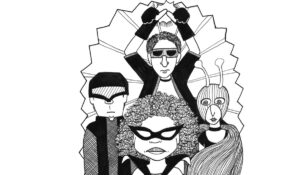 Lest we forget, this is an illustrated novel. Ignatow makes the somewhat gutsy choice of not explaining the art for a long time. Long before we even get to know Martina, we see her in various panels and spreads as an alien. In time, we learn that the art in this book is all her art, and that she draws herself as a Martian because that’s what her sister calls her. Not that you’ll know any of this for about 125 pages. The author makes you work to get at that little nugget of knowledge. By the way, as a character, Martina the artist is fascinating. She’s sort of the Luna Lovegood of the story. Or, as Nick puts it, “She had a sort of almost absentminded way of saying things that shouldn’t have been true but probably were.” There is one tiny flub in the art when Martina draws all the kids as superheroes and highlights Farshad’s thumbs, though at that point in the storyline Martina wouldn’t know that those are his secret weapons. Other than that, it’s pretty perfect.
Lest we forget, this is an illustrated novel. Ignatow makes the somewhat gutsy choice of not explaining the art for a long time. Long before we even get to know Martina, we see her in various panels and spreads as an alien. In time, we learn that the art in this book is all her art, and that she draws herself as a Martian because that’s what her sister calls her. Not that you’ll know any of this for about 125 pages. The author makes you work to get at that little nugget of knowledge. By the way, as a character, Martina the artist is fascinating. She’s sort of the Luna Lovegood of the story. Or, as Nick puts it, “She had a sort of almost absentminded way of saying things that shouldn’t have been true but probably were.” There is one tiny flub in the art when Martina draws all the kids as superheroes and highlights Farshad’s thumbs, though at that point in the storyline Martina wouldn’t know that those are his secret weapons. Other than that, it’s pretty perfect.
It’s also pretty clearly middle school fare, if based on language alone. You’ve got kids leaving messages on cinderblocks that read “Nolite te bastardes carborundorum” or “Don’t let the bastards get you down.” That may be the most realistic middle school detail I’ve read in a book in a long time. The bullying is systematic, realistic, and destructive (though that’s never clear to the people doing the bullying). A little more hard core than what an elementary school book might discuss. And Cookie is a superb bully. She’s honestly baffled when Farad confronts her about what she’s done to him with her rumors.
A word of warning to the wise: This is clearly the first book in a longer series. When you end this tale you will know the characters and know their powers but you still won’t know who the bad guys are exactly, why the kids got their powers (though the bus driver does drop one clue), or where the series is going next. For a story where not a lot of time passes, it really works the plotting and strong characterizations in there. I like middle grade books that dream big and shoot for the moon. “The Mighty Odds” does precisely that and also works in some other issues along the way. Just to show that it can. Great, fun, silly, fantastical fantasy work. A little smarter and a little weirder than most of the books out there today.
On shelves September 13th.
Source: Galley sent from publisher for review.
Readalikes:
Professional Reviews:

It's almost the end of the year for us, and kids are starting to think about how hard it is to say goodbye to favorite teachers. I wish I could give every teacher a copy of The Thank You Book, Mo Willem's terrific finale for his Elephant and Piggie series.
This is a must-read series; kids of all ages love the friendship and banter between Elephant and Piggie, especially 1st graders who are venturing into reading independently.
The Thank You Book
from the Elephant and Piggie series
by Mo Willems
Disney-Hyperion, 2016
Your local library
Amazon
ages 4-8
*best new book*
Gerald and Piggie are best friends. They help each other, they play with each other, and they give each other advice--plenty of it. Piggie is outgoing, and Gerald is cautious. Piggie tends to be head-strong, while Gerald tends to be a worrier. This combination creates plenty of laughs, and it lets kids see different sides of their own personalities.
Kids love reading Elephant and Piggie books aloud--the whole story is told through dialog which bubbles over with emotion. As my friend
Carrie Gelson wrote in her
Goodreads review,
"This series has transformed many a little reader. It has given the gift of expression, confidence, laughter and fun. And it ends with gratitude."
Gerald and Piggie have starred in twenty five books(!!) together. For their finale, Piggie decides to thank everyone. She's so happy, that she's thanking of all her friends, "everyone who is important to me." But Gerald is worried that she might forget someone...someone very important.
 |
| "Thank you all for being great friends!" |
Willems creates tension with ease, as Gerald gets more and more upset. Readers are just sure that he wants Piggie to thank HIM, but Willems pulls out the perfect surprise ending.
 |
| "You are forgetting someone! Someone VERY important." |
In a delightful twist, Gerald turns to Piggie and reminds her that they need to thank their readers. “We could not be ‘us’ without you,” says Gerald. Piggie joins in, adding, “You are the best!” Talk about a moment that melts my heart, each and every time I read it. Willems honors the hard work that young readers do in bringing stories to life, and he does so with joy, humor and heart.
As a teacher and a librarian, I want to thank every child who's shared their reading lives with me, every parent who's entrusted their child to me, every author who's shared a bit of themselves with us through their words. Thank YOU, Mo Willems, for bringing so much joy to all of us, helping us create so many teachable moments, so many wonderful conversations.
Head on over to
ThankoRama.com to download, print, and fill out your own #ThankoRama speech bubbles. Teachers, definitely check out
The World of Elephant and Piggie Teaching Guide.
Thank you, my blog readers, for sharing the joy of reading with me and with all the kids in your lives! The review copy was kindly sent by the publisher, Disney-Hyperion. If you make a purchase using the Amazon links on this site, a small portion goes to Great Kid Books. Thank you for your support.
©2016 Mary Ann Scheuer, Great Kid Books

It seems utterly perfect to start our celebration of National Poetry Month on April Fools Day with a collection of poems that will get kids laughing and sharing: Forgive Me, I Meant to Do It. It isn't politically correct. It isn't always nice. But it will get kids snickering and reading and wanting more. Share this snarky book with 4th and 5th graders, hand them a set of post-its, and ask them to mark their favorites.
Forgive Me, I Meant to Do It: False Apology Poemsby Gail Carson Levineillustrated by Matthew CordellHarperCollins, 2012
your local libraryAmazonages 8-10
This is just to say, open this book at your own risk. You'll find sarcastic takes on classic fairy tales. You'll find brothers being mean to sisters. You'll find authors sneering at their editors. But share it with the right kids, and you'll see them marking pages, showing friends and reading them again and again.
Each poem starts with a simple statement. There's no denying the wrong-doing.
I have eaten
your hot fudge
sundae
and the cherry on top
Then describe the effects. Show your point of view. Be blunt. But try to see what someone else's perspective might be.
which
I thoughtfully
replaced
with anchovies
End the last stanza with "Forgive me" but know that this is a false apology. You're really not sorry at all. And your reader knows it.
Forgive me
I gave three spoonfuls
of ice cream
to the cat
Add in Matthew Cordell's line drawings, and kids will be laughing and sharing.
I have to be honest. The first time I read this book, I didn't really get it. But when I shared it with kids, that's when I realized the true value of it. They had to read it with friends. They started debating which poem was best. They immediately got point of view, connected it to their experiences, and wanted more.
Snow White gets tired of the dwarves ("you snore/ pick your noses/ never take a bath") and runs off with the evil witch. Kids call up a genie and put parents behind bars ("Forgive me/
time-out and
grounded / and other unpleasant phrases/ can no longer be uttered").
Pure magic, in my view. And especially best shared on April Fools Day. Don't you think? For other reviews, check out Franki's at
A Year of Reading, Betsy's at
Fuse #8.
Poetry ©2012 by Gail Carson Levine, illustrations ©2012 by Matthew Cordell; used with permission from the publisher. The review copy came from our school library. If you make a purchase using the Amazon links on this site, a small portion goes to Great Kid Books. Thank you for your support.
©2015 Mary Ann Scheuer, Great Kid Books

By:
Betsy Bird,
on 2/21/2016
Blog:
A Fuse #8 Production
(
Login to Add to MyJacketFlap)
JacketFlap tags:
Reviews,
middle grade fiction,
fantasy,
middle grade fantasy,
funny books,
Alfred A. Knopf,
Random Penguin House,
Susan Hill Long,
funny fantasy,
2016 reviews,
Reviews 2016,
2016 middle grade fantasy,
2016 middle grade fiction,
Add a tag
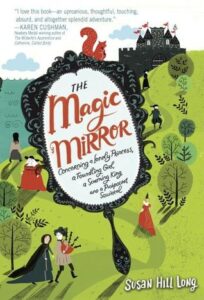 The Magic Mirror: Concerning a Lonely Princess, a Foundling Girl, a Scheming King, and a Pickpocket Squirrel
The Magic Mirror: Concerning a Lonely Princess, a Foundling Girl, a Scheming King, and a Pickpocket Squirrel
By Susan Hill Long
Knopf (an imprint of Penguin Random House)
$16.99
ISBN: 978-0-553-51134-2
Ages 9-12
On shelves May 10th
What do you want from a fairy tale? Magic? Romance? Derring-do? Despicable villainy? Academics and scholars have puzzled and puzzed until their puzzlers were sore over what it is about the European fairy tale genre that so enthralls us. Recently fairy tale lovers have seen the entertainment industry discover that fairy tales are still a primo source of capital. On the book side of things, I’ve seen a distinct uptick in retellings of Cinderella, Little Red Riding Hood, and more in the last five years. Classic fairy tales have it easy. It’s the newbies that have a hard time going. How do you get a foothold in a genre that’s been in existence for centuries? In The Magic Mirror by Susan Hill Long, the author decides to simplify. Merely take the elements that suit the story best (highway robbers, princesses, and just a smidgen of magic) and then weave in some surprisingly stellar writing. The result is fairy tale fare that reminds one of nothing so much as the best of Gail Carson Levine. Funny, friendly, witty and sly, this makes for perfect bedtime reading.
Margaret (or Maggot, depending on who’s talking about her) should technically be grateful for her life. Though she sports a lame foot (an “accident of birth” she’s been told) and is an orphan, she has a roof over her head, food in her belly, and aside from avoiding Thomas, the local bully, not too much trouble in life. But of course she’s desperately lonely, and that’s a problem that’s hard to cure. When she makes the acquaintance of a man with a wooden leg, she receives in a trade a mirror capable of showing anyone their heart’s desire. But what she sees when she peers into it is a strange wild-eyed man she’s never laid eyes on before. When Minka, the woman who cares for Margaret, decides to marry her off, our heroine decides that leg or no leg she is not going to have her life decided for her. And in the course of her adventures she’ll little suspect there are royal mix-ups, a king with little in the way of fatherly feelings, a boy with a bagpipe, and a light-fingered squirrel in her very near future.
Is anyone going to challenge me when I say that comparing a book, any book, to The Princess Bride is never a good idea? The Princess Bride inspires a loving fandom that jealously guards its unique storytelling. Still, there are many familiar tropes in that book/film. A princess, a pirate, giants, swordplay, you name it. When writing a new fairy tale you Harry Potter it. You take those familiar elements and weave them into something new. So when Ms. Long wrote The Magic Mirror she did exactly the same thing. Additionally, by splitting her narrative into an increasingly large cast of characters, she gives it a distinctly Princess Bride-like feel. It has humor and fights and baddies in all the same ways. When Kirkus reviewed this book they said that it was predictable and unbelievable (because of the coincidences in the plot). I’d counter that there’s nothing any more predictable or unbelievable here than you’d find in any modern fairy tale, be it Ella Enchanted or Frozen, and just as much joy.
In this particular case it’s Long’s descriptions and characters that stay with a reader long after the book has been put down. Even the foulest villain has an emotional weak spot, and characters that are set up to seem like baddies at the beginning (like Minka) turn out to be pretty soft in the end. Plus you really root for these characters. Some authors think it necessary to drown their villains in a thick sauce of sadism so that when the heroes triumph it’s an even keener victory. But when writing books for 9-12 year olds there’s no need to pile on the bloodshed. In the right writers’ hands, as long as the antagonist is preventing the heroes from their happy ending, that’s all you really need to do to keep the plot moving at a sharp clip. I liked the people I met in this book, but the descriptions were probably my favorite aspect of the novel. Lines like, “Her voice climbed up the sentence like a ladder, and quavered at the top,” make me happy. Ditto wisdoms like “It’s all in the angle of the squint.” Or a description of a cathedral’s shadows where a character “shuffled away from the creeping dark so that she might escape God’s notice.”
I did experience a palpable sense of relief that it was written today, though. Since Margaret has a physical disability (a foot and leg injured long ago that were never set correctly) there is a brief suggestion at one point that there might be a magical remedy to her problem. I was reminded of a similar middle grade novel Handbook for Dragon Slayers which also starred a girl with an injured limb. In that book a cure for her disability is bandied about and ultimately rejected in an excellent manner. Indeed, the book went on to win a Schneider Family Book Award given annually to books that embody, “an artistic expression of the disability experience for child and adolescent audiences.” Reading The Magic Mirror I had the very clear sense that if this book had been written in the past an easy cure for Margaret’s leg would have been part of the story’s happy ending and that would be that. These days such endings are mildly insulting answers to what, in truth, are very real problems. Happily The Magic Mirror does not fall into such a trap (though sadly the heroine does have some unfortunate thoughts about a successful man with a hunch on his back that did not gel well with the book’s otherwise positive embrace of disability).
As it happens, I did find one particular aspect of the book problematic. This is Ms. Long’s second novel so while the bones of this story are strong there are aspects to the writing that will need a bit of strengthening in the future. Specifically, the exposition. Now the art of exposition is learned, not born. Filling the reader in on a hitherto unknown back-story is no easy task. At best, back-story is woven into the dialogue so naturally the reader is hardly aware that they’re learning about what’s come before. Clunky back-story, in contrast, places huge chunks of it en masse in the same general vicinity of the novel. Alas, near the end of The Magic Mirror the author has set herself up to reveal not just the back-story of our heroine, but of at least three to four other people as well. The result is ultimately somewhat confusing, with new characters popping up (a midwife, a thief’s wife) to fill in the details out of the blue. Without a character guide (which would, admittedly, give away some of the plot) there is little to help kids distinguish between Petra vs. Minka vs. Margaret.
For all that there is a magic mirror in the story the book is pretty devoid of magical activities. You won’t find dragons or wizards or much of anything out of this world here, with the sole exception of the mirror itself. It’s almost a pity that it’s in the title since you could probably hand this title to kids that only like realism (and they do indeed exist) and they’d get just as much out of it as the most ravenous fantasy fan. While it’s not a perfect novel, it is a ripping good yarn that keeps you enthralled from page one onward. Will you see where it’s going? Maybe. But you’ll enjoy the sights along the way. Fine fantastical stuff.
For ages 9-12.
On shelves May 10th.
Like This? Then Try:

Kids ask for funny books all the time, but the Newbery Committee does not often honor books that kids find as truly funny. I try to honor that in the books we consider for our Mock Newbery discussions. Many have speculated that this is because humor is so subjective, but I would argue that it is more because kids value humor so much more than adults. Many kids would prefer book with lots of humor and perhaps less weighty themes.
The Diary of a Mad Brownie
by Bruce Coville
Random House, 2015
Google Books preview
audiobook (Audible)
Your local library
Amazon
ages 8-11
A tiny magical creature known as a brownie, Angus Cairns is bound by a family curse to serve the youngest female in the McGonagall line. As the story opens, he must travel from Scotland to America to find Alex Carhart, the great-great-great-niece of his recent mistress. Brownies excel at putting things in order, and this could be a huge help to young Alex--except that she and Angus both have feisty tempers that often get in their way.
My students loved the humor in this story. They talked about the magical creatures with delight, saying they were well developed and came alive.
"It was so so funny." -- Kimani
"Super funny!!" -- Cavaeyah
I had so much fun listening to the
audiobook for this story. Euon Morton especially brought Angus to life, with his terrific Scots accent. I would argue that Coville's use of language is outstanding, especially creating Angus' voice. Just look at how Angus describes Alex: She's a "disorderly, messy, negligent, slapdash, untidy, unfastidious, unsanitary creator of disorder," (as quoted in the
PW Review).
Pip Bartlett's Guide to Magical Creatures
by Jackson Pearce and Maggie Stiefvater
Scholastic, 2015
Google Books preview
Your local library
Amazon
ages 8-11
Magical animals also infuse Pip Bartlett's world, and she relishes her special ability to talk with them. She can't wait to spend the summer with her aunt, who's a vet for magical animals. But disaster seems to strike around every corner for Pip, whether it's the unicorns stampeding at a school fair, or Fuzzles catching fire as they hide in people's underwear drawers.
"I like this book because I really like the magical creatures and I want a unicorn now." -- Josselin
Students definitely liked this for the magical creatures, but they also recommended it to friends who like funny books. Pearce and Stiefvater create many laughs from both the situations Pip finds herself in, and from the outlandish behavior of some of the animals. As students talked about the story, they started to notice the growth in Pip's character.
"Pip really learns how to connect to the magical animals, and not just talk to them." -- McKenna
Both of these books are the beginnings of new series for established authors. My students are definitely looking forward to the next installments, both scheduled to be published in October.
The review copies were kindly sent by the publishers, Random House and Scholastic, but we have also purchased additional copies for our school library. If you make a purchase using the Amazon links on this site, a small portion goes to Great Kid Books. Thank you for your support.
©2016 Mary Ann Scheuer, Great Kid Books
Do your little ones love scary stories, or are you looking for gentle tales with silly ghosts? Here are five new favorite picture books with plenty of ghosts, mummies and monsters to satisfy all sorts of little beasts.
Mummy Cat
by Marcus Ewert
illustrated by Lisa Brown
Clarion, 2015
Your local library
Amazon
ages 5-9
As the graceful mummy cat emerges from his tomb, he searches for “his loving friend,” the girl-queen Hat-shup-set. Bay Area team Ewert and Brown create a tender friendship story, deftly weaving together a creepy murder-mystery, hieroglyph clues, and Ancient Egyptian practices. My students are loving this story, especially the detailed illustrations and the hidden clues. Enchanting.
Fright Club
by Ethan Long
Bloomsbury, 2015
Your local library
Amazon
ages 4-8
Only the truly scary can be members of the Fright Club. But when a cute little bunny tries to join their fun, he's outraged when they tell him he can't join. Returning with his lawyer and friends, he launches a protest: “HISS, MOAN, BOO! WE CAN SCARE TOO!” chant a butterfly, ladybug, turtle, and squirrel. I love the way Ethan Long turns kids' (and monsters') expectations upside down, showing how things are not always the way you assume they'll be. Plus, this story is a lot of fun to read aloud, and isn't actually too scary for new readers.
The Fun Book of Scary Stuff
by Emily Jenkins
illustrated by Hyewon Yum
Farrar, Straus and Giroux, 2015
Your local library
Amazon
ages 4-8
A young boy makes a list of all the things that scare him. Monsters top his list (“Mom says they eat anyone who doesn’t stay in his own bed”) but his dog calmly refuses to admit that he’s afraid of anything. The pair’s hilarious back-and-forth dialog continues, until the tables turn. Jenkins and Yum perfectly capture the pair’s worry and false bravado.
Leo: A Ghost Story
by Mac Barnett
illustrated by Christian Robinson
Chronicle, 2015
Your local library
Amazon
ages 3-7
*best new book*
Leo has a hard time making friends: no one can see him. But when he meet Jane, she invites him to play, thinking he’s one of her imaginary friends. Leo is delighted but nervous that she will be scared when she finds out he’s a ghost. I love how accepting Jane is, how open she is not only to Leo but also to her own imagination. This gentle ghost story is more about finding friendship and acceptance than a Halloween story, but it’s utterly delightful. For more, see my
full review here.
The Little Shop of Monsters
by R.L. Stine
illustrated by Marc Brown
Little, Brown, 2015
Your local library
Amazon
ages 4-8
Blending creepy descriptions with goofy illustrations, this picture book strikes just the right balance for a mock-horror picture book. “Pssssst…HEY, YOU! Are you afraid of MONSTERS? Do they make you SHIVER and SHAKE?” As the text amps up the fright, the illustrations put the emphasis on the laughs, making this right for those who like to giggle and squirm at the same time.
You might also enjoy seeing these other Halloween recommendations:
The review copy was kindly sent by the publishers: Chronicle Books, Macmillan, Houghton Mifflin, Bloomsbury and Little, Brown. If you make a purchase using the Amazon links on this site, a small portion goes to Great Kid Books. Thank you for your support.
©2015 Mary Ann Scheuer, Great Kid Books
If you have kids who love Elephant and Piggie or Frog and Toad, laughing at the way these friends play together, bicker and work through their conflicts, then you're going to love Ballet Cat: The Totally Secret Secret. It sparkles with humor, but underlying it is a real understanding of friendship.
Ballet Cat: The Totally Secret Secret
by Bob Shea
Disney Hyperion, 2015
Your local library
Amazon
ages 4-8
*best new book*
Ballet Cat’s best friend Sparkle Pony is getting a bit tired of always playing ballet -- but what’s a BFF supposed to do? Sparkle Pony tries to suggest other things. He tries to go along and dance. But then he realizes that he's holding onto a big secret.
 |
| "I will always be your friend, Sparkle Pony! No secret can ever change that." |
 |
"Sometimes..."
"Yes, I'm listening." |
New readers (and little siblings) will delight in how Bob Shea builds this story, with expressive illustrations and large speech bubbles. They can laugh at the exaggeration, but also relate to how Sparkle Pony feels. I love this climax:
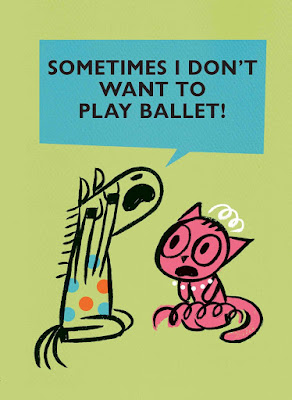 |
| "SOMETIMES I DON'T WANT TO PLAY BALLET!" |
This would make a great book to act out as readers' theater, but it would also make a great one to talk about at home. I can even see bringing it up in the car the next day:
"You know, I was thinking about Ballet Cat and her friend. I wonder why it was hard for Sparkle Pony to tell her that he didn't like ballet?"
Friends need to accept differences--adults know that, but often it's hard to put into practice. This is a great story about just that: loving each other even more than we love our individual interests.
Illustrations ©2015 Bob Shea. The review copy was kindly sent by the publisher, Disney Hyperion. If you make a purchase using the Amazon links on this site, a small portion goes to Great Kid Books. Thank you for your support.
©2015 Mary Ann Scheuer, Great Kid Books

By:
Betsy Bird,
on 7/17/2015
Blog:
A Fuse #8 Production
(
Login to Add to MyJacketFlap)
JacketFlap tags:
science fiction,
Reviews,
funny books,
Harper Collins,
Best Books,
middle grade science-fiction,
British imports,
Best Books of 2015,
Reviews 2015,
2015 reviews,
2015 funny books,
2015 science fiction,
funny science fiction,
Sophia McDougall,
Add a tag
 Mars Evacuees
Mars Evacuees
By Sophia McDougall
Harper Collins
$16.99
ISBN: 978-0-06-229399-2
Ages 9-12
I’ve a nasty habit of finishing every children’s book I start, no matter how dull or dire it might be. I am sort of alone in this habit, which you could rightly call unhealthy. After all, most librarians understand that their time on this globe is limited and that if they want to read the greatest number of excellent books in a given year, they need to hold off on spending too much time devouring schlock and just skip to the good stuff. So it is that with my weird predilection for completion I am enormously picky when it comes to what I read. If I’m going to spend time with a book, I want to feel like I’m accomplishing something, not slogging through it. My reasoning is that not all books are good from the get-go. Some take a little time to get going, you know? It might take 50 pages before you’re fully on board, so I always give the book the benefit of the doubt. Some books, however, have the quintessential strong first page. They are books that are so smart and good and worthy that you feel that you are maximizing your time on this globe by merely being in their presence. Such is the case with Mars Evacuees. A sci-fi middle grade novel that encompasses everything from gigantic talking floating goldfish to PG discussions of alien sex, this is one of those books you might easily miss out on. Stellar from the first sentence on.
At first it seemed like a good thing that the aliens had come. When you’ve got a planet nearly decimated by global warming, it doesn’t sound like such a bad deal when aliens start telling you they’ve got a way to cool down the planet. The trouble is, they didn’t STOP cooling it down. Turns out the Morrors are looking for a new home and if it doesn’t quite suit their needs they’ll adapt it until it does. Earth has fought back, of course, and so now we’re all trapped in a huge space battle of epic proportions. Alice Dare’s mother is the high flying hero Captain Dare, killer of aliens everywhere. But all Alice knows is that she’s being shipped off with a load of other kids to Mars. The idea is that they’ll be safe there and will be able to finish their education in space until they’re old enough to become soldiers. And everything seems to be going fine and dandy . . . until the adults all disappear. Now Alice and her friends are in the company of a cheery robot goldfish and must solve a couple mysteries along the way. Things like, where are the adults? What are those space locust-like creatures they’ve found on Mars? And most important of all, what happens when you encounter the enemy and it’s not at all like you thought it would be?
The first sentence of any book is a tricky proposition. You want to intrigue but not give too much away. Too brash and the book can’t live up to it. Too mild and people are snoring before you even get to the period. Here’s what McDougall writes: “When the polar ice advanced as far as Nottingham, my school was closed and I was evacuated to Mars.” I could not help but be reminded of the first line of M.T. Anderson’s Feed when I read that (“We went to the moon to have fun, but the moon turned out to completely suck”). But it’s not just her first sentence that’s admirable. In a scant nine pages the entire premise of the book is laid out for us. Aliens came. People are fighting them. And now the kids are being evacuated to Mars. Badda bing, badda boom. What I didn’t realize when I was first reading the book, though, was that this chapter is very much indicative of the entire novel. There is a kind of series bloat going on in children’s middle grade novels these days. Books with wild premises and high stakes are naturally assumed to be the first in a series. There’s a bit of a whiff of Ender’s Game and The White Mountains about this book when you look at the plot alone, and so you assume that like so many similar titles it’ll either end on a cliffhanger, or it’ll solve the immediate problem, but save the bigger issue for later on. It was only as I got closer and closer to the end that I realized that McDougall was doing something I almost never encounter in science fiction books these days: She was tying up loose ends. It got to the point where I reached the end of the book and found myself in the rare position of realizing that this was, of all things, a standalone science fiction novel. Do they even make those anymore? I’m not saying you couldn’t write a sequel to this book if you didn’t want to. When McDougall becomes a household name you can bet there will be a push for more adventures of Alice, Carl, Josephine and Thsaaa. But it works all by itself with a neat little beginning, middle, and an end. How novel!
For all that, McDougall cuts through the treacle with her storytelling, I was very admiring of the fact that she never sacrifices character in the process of doing so. Carl, for example, should by all rights be two-dimensional. He’s the wacky kid who doesn’t play by the rules! The trickster with a heart of gold. But in this book McDougall also makes him a big brother. He’s got his bones to pick, just as Josephine (filling in the brainy Hermione-type role with aplomb) has personal issues with the aliens that go beyond the usual you-froze-my-planet grudge. Even the Goldfish, perky robot that he is, seems to have limits on his patience. He’s also American for some reason, a fact I shall choose not to read too much into, except maybe to say that if I were casting this as a film (which considering the success of Home, the adaptation of Adam Rex’s The True Meaning of Smekday, isn’t as farfetched as you might think) I’d like to hear him voiced by Patton Oswalt. But I digress.
When tallying up the total number of books written for kids between the ages of 9-12 that discuss the intricacies of alien sex, I admit that I stop pretty much at one. This one. And normally that wouldn’t fly in a book for kids but McDougall is so enormously careful and funny that you really couldn’t care less. Her aliens are fantastic, in part because, like humans, there’s a lot of variety amongst them. This is an author who cares about world building but also doesn’t luxuriate in it for long periods of time. She’s not trying to be the Tolkien of space here. She’s trying to tell a good story cleanly and succinctly.
The fact that it’s funny to boot is the real reason it stands out, though. And I don’t mean it’s “funny” in that it’s mildly droll and knows how to make a pun. I mean there are moments when I actually laughed out loud on a New York subway train. How could I not? This is a book that can actually get away with lines like “If you didn’t want me to build flamethrowers you shouldn’t have taught me the basic principles when I was six.” Or “It was a good time in Earth’s history to be a polar bear. Unless the rumors were true about the Morrors eating them.” Or “Luckily I don’t throw up very easily, but it made me feel as if I was being hit lightly but persistently all over with tablespoons.” That’s the kind of writing I enjoy. Silly and with purpose.
So it’s one part Lord of the Flies in space (please explain to me right now why no one has ever written a book called “Space Lord of the Flies”), one part Smekday, and a lot like those 1940s novels where the kids get evacuated during WWII and find a kind of hope and freedom they never would have encountered at home. It’s also the most fun you’ll encounter in a long time. That isn’t to say there isn’t the occasional dark or dreary patch. But once this book starts rolling it’s impossible not to enjoy the ride. For fans of the funny, fans of science fiction, and fans of books that are just darn good to the last drop.
On shelves now.
Like This? Then Try:
Other Blog Reviews: The Book Smugglers
Misc: And since this book is British (did I fail to mention that part?) here’s the cover they came up with over there.

I think I may like ours more, though both passed up the fact to display the goldfish, which I think was a mistake. Fortunately, the Brits at least have corrected the mistake (though I’m mildly disappointed to see that there is a sequel after all).


By:
Betsy Bird,
on 6/3/2015
Blog:
A Fuse #8 Production
(
Login to Add to MyJacketFlap)
JacketFlap tags:
Reviews,
graphic novels,
Random House,
funny books,
Best Books,
middle grade graphic novels,
Best Books of 2015,
Reviews 2015,
2015 reviews,
2015 graphic novels,
2015 funny books,
funny graphic novels,
Judd Winick,
Add a tag
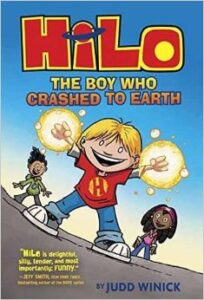 Hilo: The Boy Who Crashed to Earth
Hilo: The Boy Who Crashed to Earth
By Judd Winick
Random House Children’s Books
$13.99
ISBN: 978-0-385-38617-3
Ages 9-12
On shelves September 1st
Relentless cheer. You can use it for good. You can use it for evil. You can use it in the name of humor too, but that’s a trickier game to play. I’m not saying it can’t be done. It just takes a certain level of finesse. Now I read a lot of graphic novels for kids in a given year that sell themselves as “funny”. And while I know that humor is subjective, I tell you plain that most of them aren’t of the laugh-out-loud variety. So when someone tries to sell me on the “funny” line with a comic I don’t actually expect that it’s gonna make me guffaw on the subway and embarrass me in front of the other riders. I guess I should be pretty peeved at you, Hilo for doing just exactly that, but how can I be mad at you? Your crazy positive outlook on life combined with your funny funny lines just makes you the most enjoyable hero to hit the library shelves in years. We get a lot of heroes around here but hardly any of them make us laugh. This guy, I like. This guy, your kids will like. This guy’s a keeper.
What if the one thing you were good at up and moved away and left you all alone? D.J. hasn’t the talents of the other people in his family and the way he figures it the only thing he was ever good at was being friends with his next door neighbor Gina. So when Gina moved away, so did the one thing that made him feel important. Three years pass, D.J.’s alone, and that’s when he spots something falling out of the sky. It’s small. It’s blond. And it’s wearing sparkly silver underpants. By all appearances the visitor is a small boy who calls himself Hilo. He doesn’t remember who he is or why he’s there or even what he is, but what he DOES love is discovering everything, and I mean everything, about the world. It looks like Hilo may be from another dimension, which is great. Except it looks like he’s not the only one. And it looks like he’d better remember who he is and fast because someone, or some THING, is after him.
We hear a lot of talk about “likability” and whether or not you relate to a story’s hero. In terms of D.J., I think that even the most accomplished children out there can relate to a kid who feels like he isn’t good at anything at all. Hilo’s a little different. He has more than a smidgen of The Greatest American Hero in his make-up, alongside a bit of Mork from Mork and Mindy and Avatar (the Nickelodeon cartoon). First, you get someone with powers they don’t completely understand. Next, you get a otherworldly funny being with superpowers figuring out day-to-day life. And finally, he’s a kid who ran from his frightening responsibilities and is now trying to undo a great wrong. I really love that last trope a lot because it’s something we all suspect we’d do ourselves when under serious pressure. Plus, like Avatar, Hilo delivers its message with a diverse cast and more than a smidgen of the funny.
In his bio at the back of the book Winick mentions that amongst his various influences he grew up reading the comic strip Bloom County. He’s not the first children’s book author/cartoonist to cite Berkeley Breathed as an inspiration (by the way, I love that Winick’s characters live in “Berke County”), but unlike the Bloom County imitators I’ve seen out there, Winick has managed to take the flavor and humor of the original strips and give them his own distinctive twist. Granted, the tighty whities and method of drawing toes look awfully similar to the feet and underwear of Milo Bloom, but there the direct correlations quit.
Actually, Winick’s artistic style is kind of fascinating. Particularly when it comes to characters’ eyes. A lot of the time he uses the old L’il Orphan Annie technique of keeping the pupils white and blank. But periodically, and for emphasis, small black pupils will appear. Then, in particularly emotional moments, full-color irises as well. Watching when precisely Winick chooses to use one kind of eye or another is a kind of mini lesson in comic drawing techniques in and of itself. Now Hilo is rendered in full-color glory, a fact that Winick uses to his advantage whenever he wants to create something like a portal to the Earth. But what I really liked watching, and the opening sequence is a brilliant example of this, is how he uses panels. The beginning of the book, which is a kind of flash forward into the future events to come, is a mix of action and visual humor. Even though you don’t know who these characters are, you are instantly on their side. Running from gigantic killer robots sort of cuts the “empathy” timeline in half, after all.
Now if I’ve learned anything from my time on this hallowed globe it’s that kids aren’t fans of true cliffhangers. The books where the hero is literally at the end of some screaming precipice or staring down certain death? It bugs them. They won’t stand for it. This isn’t to say that don’t like it when there’s the promise of another volume of their favorite series. But you’ve gotta ease into that, right? Leave them wanting more but solve the problem at hand. I won’t lie to you. Hilo ends on a cliffhanger. Fortunately, it’s the kind that isn’t going to make you mad when you get to it. Unless you can’t get the next book in the series. Then you’ll be furious.
I was trying to find equivalent kid comics to Hilo that know how to ratchet up the funny alongside the fast-paced. There’s a Jeff Smith blurb on this book so obviously Bone comes to mind. But I’d also be sure to mention Jorge Aguirre and Rafael Rosado’s Giants Beware in the same breath. Any maybe Jeffrey Brown’s Star Wars: Jedi Academy just to be safe. All these books understand that while kids will follow an exciting, well-drawn comic to the ends of the earth, throw in a little humor there and they’ll go from merely enjoying it to loving it with some deep, buried part of their little comic-loving souls. That’s the fandom Hilo is poised to create. Good clean laser-beams-coming-outta-your-hands fun for the whole family. Now hand me #2, please. I have some more reading to do.
On shelves September 1st.
Like This? Then Try:

Hooray! Today is my birthday, and I want to share a slice of cake with every one of my friends. This cake below, from 1976, should be large enough for everyone to have a slice!
 |
| 4th of July 1976 stars & stripes cake |
A trip down memory lane! I can still remember the feeling of growing tall enough to look at the oven knobs straight on, instead of having to stand on tip toe.
For a birthday treat, I'd like to share a favorite book:
A Piece of Cake, by LeUyen Pham. It will bring lots of smiles, as kids laugh at the unexpected twists at each page turn.
Kind little Mouse has made a birthday cake for his friend Little Bird. He sets off to deliver the cake, but meets other friends who ask for a piece. Pham sets up readers to expect that Mouse will gather the expected ingredients along the way: eggs, milk, honey. But with each page turn, Mouse's friends offer something completely unexpected in return.
A Piece of Cake was honored as a finalist in the
Northern California Book Awards this year. I was honored to be part of the children's award committee. Here is part of their description of this delightful story:
Piece by piece, Mouse trades away the cake until he has none left, arriving at Little Bird’s house only with an odd assortment of things... As they walk back to Mouse’s house to make another cake, they find each friend surrounded by trouble. Once again, Pham expertly manages page turns to surprise readers with the solutions that Little Bird cleverly suggests.
I adore the retro feel of Pham's artwork and the story is so much fun to read aloud. Little kids will love the patterned surprises, and older kids will have fun with the clever twists and enjoy the message about teamwork and creative thinking. I hope this web sampler from
HarperCollins lets you glimpse part of this story--make sure to turn the pages to see how the story starts off:
The review copy was kindly sent by the publisher, HarperCollins. If you make a purchase using the Amazon links on this site, a small portion goes to Great Kid Books. Thank you for your support.
©2015 Mary Ann Scheuer, Great Kid Books
There are times my kids seem dissatisfied with everything, but I'm also sure that there are times when all I say is NO. This hilarious book takes that situation and produces laughs in all the right places--the perfect medicine for crabby kids
and peevish parents.
I Don't Want to Be a Frog
by Dev Petty
illustrated by Mike Boldt
Doubleday / Random House, 2015
Your local library
Amazon
ages 3-8
*best new book*
Little frog is sure he doesn't want to be a frog. As he sits reading a book about cats, he decides that would be the perfect animal to be. "I want to be a cat," he declares to his father. Nope, his father says, you're a frog. Back and forth the dialog goes, in easy to read expressive short sentences--perfect for reading aloud together.
 |
"I want to be a cat."
"You can't be a cat."
"Why not?" |
 |
"Because you're a frog."
"I don't like being a frog. It's too wet."
"Well, you can't be a cat." |
Hey--little frog can hop! He should be a rabbit, he tells his father. "You can't be a rabbit," his father calmly replies. No long ears, right? "I don't like being a Frog. It's too slimy," little frog whines. Little frog isn't easily persuaded. And his father's wise words don't sink in at all.
Kids are loving Mike Boldt's illustrations, especially how expressive little frog is. They love knowing that the dad is right, but I think they're rooting for little frog too. And the conclusion leads to giggles from everyone who's read it in our library.
Along comes a hungry wolf who tells how much he likes to eat all those animals. But does he like to eat frogs? No, not one bit. They're much too wet, too slimy, too full of bugs. Ahh, little frog finally realizes that--you know what, being who you are can be a pretty good thing after all.
For more of a taste, check out this adorable trailer:
Illustrations ©2015 by Mike Boldt; used with permission from the publisher. The review copy was kindly sent by the publisher, Random House. If you make a purchase using the Amazon links on this site, a small portion goes to Great Kid Books. Thank you for your support.
©2015 Mary Ann Scheuer, Great Kid Books
As kids enter school, their peer groups start having a strong influence over them--with that comes pressure to fit in. So that's why I love books that give the message that we want lots of different types of friends, that we all need the courage to be ourselves. Here are three new favorite picture books that sing that song.
Wild About Us
by Karen Beaumont
illustrated by Janet Stevens
Houghton Mifflin Harcourt, 2015
Your local library
Amazon
ages 3-7
Warty Warthog has warts, Rhino has wrinkly skin, and Crocodile sports a toothy grin--but they all love who they are. With snappy rhythm and rhymes that are a joy to read aloud, Beaumont celebrates what makes each animal unique.
 |
"Elephant is confident that nothing is wrong.
He knows that his nose is supposed to be long." |
Janet Stevens is one of my favorite illustrators of animals--I adore her
Help Me, Mr. Mutt! Here, her animals are full of personality and pizzazz. Kids will love the cartoony appeal, but also connect to how each proudly declares how they love themselves just the way they are.
Tommy Can't Stop
by Tim Federle
illustrated by Mark Fearing
Disney Hyperion, 2015
Your local library
Amazon
ages 4-8
Young Tommy is in perpetual motion, bouncing like a pogo-stick, hollering while he hurdles and clomping like an elephant. He's driving his family crazy ("'He's an
animal,' his sister pouts to their parents.") but you can tell from the illustrations that this is a little guy who's just got to move. When his mom drags him to tap class, he's really not sure it's for him. But when the teacher begins bouncing, he's hooked!
 |
"The tap teacher begins bouncing. (Wait! She twirls like... Tommy!)
'You're a ... pogo stick!' he whispers as he watches.
'I call this a hop'" |
I love the way this book shows Tommy discovering a joyful, positive way to channel his energy. When the tap teacher kicks, he's amazed that she kicks like a bulldozer -- but she says, "I call this a brush! (Everyone brushes, but Tommy brushes boldest.)" Kids--quiet ones and rambunctious ones--will feel this joy coming through both the illustrations and the words, as Tommy discovers how being true to himself helps him be a star.
Drum Dream Girl: How One Girl's Courage Changed Music
by Margarita Engle
illustrated by Rafael López
Houghton Mifflin Harcourt, 2015
Your local library
Amazon
ages 6-9
*best new book*
Cuba is an island full of wonderful music, but this beautiful picture book shows how hard one girl had to work to be true to her musical self. Millo Castro Zaldarriaga, who was of Chinese, African, and Cuban descent, dreamed of "pounding tall conga drums / tapping small bongó drums, and boom boom booming / with long loud sticks." But in 1930s Cuba, drumming was taboo for girls.
 |
“But everyone / on the island of music / in the city of drumbeats /
believed that only boys / should play drums …” |
Millo was not deterred, playing her drums every chance she can, even if it was in her own head. Finally, her father softened and brought a teacher to listen to Millo's drumming--a teacher who was so impressed that he allowed her father to have courage to break the social taboo. I just love how Millo's joy comes through in the illustrations. López captures a visual rhythm, the way that Engle does in her poetic text.
 |
“When she walked under / wind-wavy palm trees / in a flower-bright park / she heard the whir of parrot wings ...
the dancing tap / of her own footsteps / and the comforting pat / of her own heartbeat.” |
This beautiful, poetic picture book will inspire children today to follow their own dreams, even if society around them scorns them. To see more of these wonderful illustrations, head over to
Seven Impossible Things; to learn more about Engle and Lopez's creative process, definitely read Julie Danielson's article in Kirkus:
Beating the Drum for Women's Rights.
I hope you enjoy these new picture books. Whether it's humorous animals, bouncing little boys or girls who feel music thrumming in their souls, these stories can speak to kids, helping them have the courage to be themselves.
Illustrations ©2015 by Janet Stevens, Mark Fearing and Rafael López; used with permission from the publishers. The review copies were kindly sent by the publishers, Houghton Mifflin Harcourt and Disney Hyperion. If you make a purchase using the Amazon links on this site, a small portion goes to Great Kid Books. Thank you for your support.
©2015 Mary Ann Scheuer, Great Kid Books

What makes a great book for kids? I'd say it's a book that makes them want to read more, a book that makes them smile or wonder, a book that makes them think about it after they close the page. It's a book that inspires kids to create their own stories and feel the power of their own words.
Neon Aliens Ate My Homework is a collection of poems from comedian, musician and actor Nick Cannon that did just that.
Neon Aliens Ate My Homework and Other Poems
by Nick Cannon
illustrated by Nick Cannon, Art Mobb, and more
Scholastic, 2015
Your local library
Amazon
ages 6-9
*best new book*
Cannon shares a collection of poems that range from giggle-inducing to gross, thought-provoking to full of bravado, and this variety was very appealing to my students. They loved how one minute they were laughing about neon aliens eating up Nick's backpack to the next minute thinking about how they can believe in themselves and stand up to bullies who spread hatred.
Throughout, Cannon shows kids the power of words -- the words they read, and the words they write or say themselves. He starts by honoring Shel Silverstein, still a favorite among my students. This lets us talk about the power of books, both their staying power (their kids might read these same books!) but also the escape that they can provide during difficult times.
 |
"He changed my life with just his words.
The utmost respect is what he deserves.
He made me smile in my tough times,
He encouraged me to live life through my rhymes." |
We were able to dig into some of his imagery and characterization, whether Cannon used it to inspire us ("SuperMom" below) or entertain us ("Pink Lunch Lady"). His poems resonated with my students. They understand how a mom can be "soft yet tough" and could see how his examples helped show this.
 |
"She can multitask with lightning-fast hands,
And the brightest of lights shines wherever she stands.
She goes to work in the morning, conquers school at night.
She can read minds and knows how to break up a fight." |
Today, my students especially responded to the poem "Haters." We talked about Cannon's message and the power of his words. We talked about what the imagery meant, how hate can melt away. These are all skills that the Common Core is asking students to do -- but here, we are taking a modern poem that speaks to their experience to show how meaningful it can be.
 |
'Haters like to bully, but I will not waver.
Haters think they're tough, but I'm the one who's braver.
Haters are doubters, and I'm a believer.
Haters are cowards, and I'm an achiever.
One day when I'm older, living my dream,
I'll let that hate melt away, just like ice cream." |
Seek out this book and the audio recording. You can hear Nick Cannon reading his poems, which conveys how heartfelt so many of these poems are. My experience is that 2nd and 3rd graders respond best to this collection, hitting the same sweet spot as Shel Silverstein.
Illustrations ©2015 by Nick Cannon, Art Mobb, and Morf; used with permission from Scholastic. The review copy was kindly sent by the publisher, Scholastic. The audiobook review copy was borrowed from our local library as a downloadable audio through
Hoopla. If you make a purchase using the Amazon links on this site, a small portion goes to Great Kid Books. Thank you for your support.
©2015 Mary Ann Scheuer, Great Kid Books
Novels in verse have particular power speaking to kids. Some really like the way that there are fewer words on the page. It can make reading them feel less overwhelming. Others like how much they can "read between the lines", letting their imaginations fill in the gaps. Others love the way these poets play with language.
Today, I'd like to share my personal top ten favorites (in alphabetical order). I adore sharing these with students. But know that there are many others that my kids love. At the end, I'll share two books on my "to be read" (TBR) pile.
Brown Girl Dreaming, by Jacqueline Woodson
I have loved talking with my students about this book, how they can relate to Jackie's experiences, how they can see themselves in the book, how they can feel some of her own journey even if their experiences are different. Winner of the 2015 Coretta Scott King Award, the 2014 National Book Award, and the 2015 Newbery Honor.
The Crossover, by Kwame Alexander
You can read this incredible novel as a basketball story, as a family drama, or as a novel written with a modern ear using rhythms and rhymes infused with music and motion. It speaks to kids in all sorts of different ways. Winner of the 2015 Newbery Award, and the 2015 Coretta Scott King Honor.
Heartbeat, by Sharon Creech
In flowing free verse, Annie describes her love of running, the changes in her best friend Max, the birth of her baby brother and her grandfather's growing confusion and dementia. Annie's world feels as if it's unraveling with all this change. As she runs for the pure pleasure of running, thoughts and questions race through her mind.
Love That Dog, by Sharon Creech
Oh, how I love this book. We start with Jack, who's dreading writing his own poems, forced to keep a poetry journal for his teacher. But as we get to know Jack and as he gets to know different poems, we start to see a fuller picture of a boy, his dog and his feelings. Check out this terrific reader's theater through
TeachingBooks, starring Sharon Creech, Walter Dead Myers, Avi and Sarah Weeks.
The Red Pencil, by Andrea Davis Pinkney
I was fascinated when I asked Andrea Davis Pinkney about why she chose to write this story in verse. She explained how she wanted to tell a story for elementary students about the Sudanese conflict, and she felt that a novel in verse would allow them more space. She was able to keep some of the more difficult scenes quite spare, so that students could infer the tragedies rather than be faced with the brutalities that her character experienced. My students continue recommending this to each other, talking about what a powerful story it is.
Rhyme Schemer, by K.A. Holt
Kids are attracted to Kevin's attitude and sass, but it's his journey that stays with them. Kevin is bullied by his older brother at home, but he then turns to bullying classmates at school. By taking pages torn from library books, he makes funny but oh-so-cruel found poems and tapes them up at school. When another student discovers Kevin's journal, he turns the tables and Kevin must find a way to make peace with his victim-turned-aggressor. This is a great choice for 5th and 6th graders who might have liked Love That Dog when they were younger.
Serafina's Promise, by Ann E. Burg
Our students were immediately drawn to Serafina and could connect with her situation, even though it was so different from their own. Serafina dreams of becoming a doctor, but she knows that she must go to school to reach her dream. This is no easy feat in modern rural Haiti. How can she do this when her mother needs her help at home, especially with a new baby on the way? Ann E. Burg writes in free verse poetry, conveying Serafina's struggles in sparse, effective language.
The Way a Door Closes, by Hope Anita Smith
This slim book reads almost like a short play in three acts. In the first 12 poems, CJ describes how he feels warm and content as part of his close-knit family. But then, everything changes as his father loses his job and then abruptly leaves home. In the 13th poem, when his dad leaves, CJ describes how it felt: "The door closed with a / click. / I felt all the air leave the room / and we were vacuum-sealed inside. / - I can tell a lot by / the way a door closes." This is a powerful book that takes readers on CJ's roller-coaster emotional journey.
Words With Wings, by Nikki Grimes
As a friend of mine wrote, this is a "peek into the mind of a daydreamer" and a wonderful teacher who encourages her in just the right way. Her teacher recognizes that Gabby is coping with her parents separation, and that daydreams are a way she escapes. He helps channel her imagination, encouraging her to let her daydreams come to life in her writing. This is a wonderful, uplifting story of a young girl finding her own voice, staying true to herself.
Zorgamazoo, by Robert Paul Weston
I loved the inventive poetry, the rhythm and rhyme, the creative fantasy. Best way to it: Dr. Seuss meets Lemony Snicket, with a healthy dose of Roald Dahl throughout. The story is fantasy, macabre, silly, and truly great fun to read aloud. The illustrations and book design add a tremendous amount to the story. Absolutely terrific wordplay, combined with a plot that keeps kids racing along with it.
My own "to be read" pile: 2 new novels in verse:
Blue Birds, by Caroline Starr Rose
Historical fiction, showing the friendship between a Native American girl and an English girl who's traveled with her parents in 1587 to Virginia. From the publisher's description: "Amid the strife, Alis meets and befriends Kimi, a Roanoke girl about her age. Though the two don’t even speak the same language, these girls form a special bond as close as sisters, willing to risk everything for the other. Finally, Alis must make an impossible choice when her family resolves to leave the island and bloodshed behind."
Red Butterfly, by A.L. Sonnichsen
Friends are including this in their favorites of 2015: a beautiful story, beautifully told. From the publisher description: "Kara never met her birth mother. Abandoned as an infant, she was taken in by an elderly American woman living in China. Now eleven, Kara spends most of her time in their apartment, wondering why she and Mama cannot leave the city of Tianjin and go live with Daddy in Montana. Mama tells Kara to be content with what she has … but what if Kara secretly wants more?"
I just love it when a character's thoughts and moods meld with mine in my mind, growing and becoming part of me. Novels in verse - usually written in free form poetry - have a particular way of doing this, where the narrator's voice almost flows into me.
If you make a purchase using the Amazon links on this site, a small portion goes to Great Kid Books. Thank you for your support.
©2015 Mary Ann Scheuer, Great Kid Books

By:
Betsy Bird,
on 4/9/2015
Blog:
A Fuse #8 Production
(
Login to Add to MyJacketFlap)
JacketFlap tags:
Reviews,
fantasy,
middle grade fantasy,
funny books,
Penguin,
Best Books,
Dial Books for Young Readers,
American fantasy,
Ursula Vernon,
Best Books of 2015,
Reviews 2015,
2015 reviews,
2015 fantasy,
funny fantasy,
Add a tag
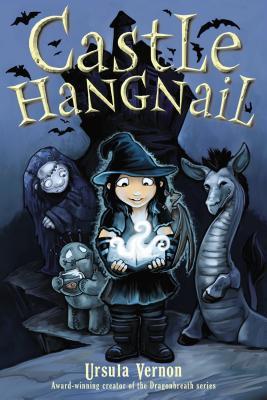 Castle Hangnail
Castle Hangnail
By Ursula Vernon
Dial (an imprint of Penguin Group)
ISBN: 978-0803741294
Ages 8-11
On shelves April 21st
These are dark times for children’s fantasy. Dark times indeed. Which is to say, when I pick up a fantasy novel for kids, more often than not I find the books filled with torture, violence, bloody blood, and other various unpleasant bits and pieces. And honestly? That is fine. There are a lot of kids out there who lap up gore like it was mother’s milk. Still, it’s numbing. Plus I really wish that there was more stuff out there for the younger kiddos. The ones who have entered the wide and wonderful world of children’s fantasy and would rather not read about trees eating people or death by cake. Maybe they’d like something funny with lovable characters and a gripping plot. Even Harry Potter had its dark moments, but in the early volumes the books were definitely for the younger readers. Certainly we have the works of Eva Ibbotson and Ruth Chew, but newer books are always welcome, particularly if they’re funny. Maybe that’s part of the reason why Castle Hangnail blew me away as much as it did. Here we have a story that knows exactly what it is, what it wants to do, and manages to be hilarious and charming all at the same time. If you like your children’s fantasy novels full of psychotic villains and mind-numbing action sequences, seek ye elsewhere. This one’s for the kids.
To some, Castle Hangnail might appear to be a “pathetic rundown little backwater” but to the minions who live there it’s home. A home desperately in need of a new Master and Mistress. After all, if they don’t get someone soon the castle might be sold off and destroyed. Maybe that’s why everyone has such mixed feelings at first when Molly appears. Molly is short and young and wearing some very serious black boots. She looks like a 12-year-old kid and Majordomo, the guardian of the castle, is having a hard time coming to terms with the fact that she’s supposed to be their new Wicked Witch. Yet when he gives her the necessary tasks to make Castle Hangnail her own, Molly appears to have a couple tricks up her sleeve. She may have her secrets but everything seems to be okay . . . that is until the REAL master of Castle Hangnail arrives to claim it.
Basically what we have here is Downton Abbey for kids, albeit with significantly more dragon donkeys (and isn’t Majordomo SUCH a Carson?). This raises the question of where precisely this book takes place. Remembering that author Ursula Vernon herself is not actually British, one supposes that the story could be read as a U.S. tale. Due to its distinct Eva Ibbotson flavor, the initial inclination is to see the book as British. Our picturesque little towns pale in comparison to their picturesque little towns, and we’ve far fewer castles lying about the place. Still, there’s no reason it couldn’t be American. After all, I’ve seen many an American author fall into the trap of putting cockney characters into their books for no apparent reason. Vernon has a good head on her shoulders. She’s not falling for that game.
Truly a book like this hinges on the characters created. If you don’t believe in them or don’t like them then you won’t want us to follow them into your tale. You have to sympathize with Majordomo, even when he does some unfortunate things. You have to like Molly, even when you don’t initially understand her back-story. It takes a little while but Vernon also makes it clear how someone can be wicked as opposed to evil. “Wicked was turning somebody into an earwig and letting them run around for a week to give them a good scare. Evil was turning someone into an earwig and then stepping on them.” An evil heroine is tricky to love. A wicked one is on par with your average 12-year-old reader.
Speaking of characters, Vernon makes some very interesting narrative choices as well. For example, our heroine is introduced to us for the first time on page six. However around Chapter 33 she disappears from the storyline and really doesn’t appear again until Chapter 39. You have to have a very strong supporting cast to get away with that one. It would be a lot of fun to ask kid readers who their favorite character was. Did they prefer Pins or his neurotic goldfish? The minotaurs or the moles? Me, I like ‘em all. The whole kooky gang. For a certain kind of reader, there’s going to be a lot of allure to having minions as lovable as these.
Even the lightest bit of middle grade fluff needs a strong emotional core to keep it grounded. If there’s nothing to care for then there’s nothing to root for. For me, the heart of this particular tale lies in Molly’s relationship with the evil sorceress (and teenaged) Eudaimonia. Lots of kids have the experience of wanting to befriend someone older and meaner. The desire to please can lead a person to act unlike themselves. As Molly says, “It’s like a weird kind of magic . . . Like a spell that makes you feel like it’s all your fault.” Molly also wrestles with being different from her kittens and sparkles loving twin and so the theme of finding yourself and your own talents come to the fore.
And now a word in praise of humor. Funny is hard. Funny fantasy? That’s even harder. Vernon has always blown away the competition in the hilarity department. Pick up any “Danny Dragonbreath” comic and you’ll see what I’m talking about. She can sustain a narrative for an early chapter book, sure, but full-blown novels are a different kettle of fish (is that a mixed metaphor?). So how does she do? You’d swear she’d been churning these puppies out for years. Here are three of my favorite lines in celebration:
- “Harrow was one of those people who is born mean and continues to lose ground.”
- “Magic was a requirement in a new Master, unless you were a Mad Scientist, and Molly didn’t look like the sort to hook lightning rods up to cadavers while wild Theremins wailed in the background.”
- “For there are very powerful spells that are very simple, but unless you happen to be the right sort of person, they will not work at all. (And a good thing too. You can raise the dead with five words and a hen’s egg, but natural Necromancers are very rare. Fortunately they tend to be solemn, responsible people, which is why we are not all up to our elbows in zombies).”
Parents wander into the children’s room of a library. They ask the librarian at the desk to recommend a fantasy novel for their 8-year-old. “Nothing too scary”, they say. “Maybe something funny. Do you have anything funny?” Until now the librarian might try a little Ibbotson or a touch of E.D. Baker. Perhaps a smattering of Jessica Day George would do. Still, of all of these Castle Hangnail appeals to the youngest crowd. At the same time, it can be equally enjoyed by older kids too. Smart and droll, it’s the fantasy you’ve always wanted to hand to the 10-year-old Goth girl in your life (along with, let’s face it, everybody else you know). A true crowd pleaser.
On shelves April 21st.
Source: Galley sent from publisher for review.
Like This? Then Try:
Other Blog Reviews: Views From the Tesseract
Professional Reviews: A star from Kirkus

James Patterson's middle school novels are a huge hit at Emerson--kids find them funny, relatable, and engaging. Patterson has long been committed to inspiring kids to read -- I'm a big fan of his
Read, Kiddo, Read website and the way he uses his notoriety and success to champion all sorts of reading for kids.
"Here's a simple but powerful truth that many parents and schools don't act on: the more kids read, the better readers they become. The best way to get kids reading more is to give them books they'll gobble up... Freedom of choice is a key to getting them motivated and excited."
We Can Get Our Kids Reading
by James Patterson
Patterson has just announced a tremendous opportunity he's offering to schools across the US:
he's pledged $1.5 million to give to school libraries through a partnership with Scholastic. Please share this news with your school librarians, principals and teachers!
Today I'd like to celebrate his newest book: Public School Superhero. I'm excited about this because so many of my 4th and 5th graders ask for funny books and adventure books. They will love the comics that are sprinkled throughout this. And I'm so happy to see the main character is an African American boy.
Public School Superhero
by James Patterson and Chris Tebbetts
illustrations by Cory Thomas
Little, Brown, 2015
read chapters 1-5 online
Your local library
Amazon
ages 9-12
Publisher summary: Kenny Wright is a kid with a secret identity. In his mind, he's Stainlezz Steel, super-powered defender of the weak. In reality, he's a chess club devotee known as a "Grandma's Boy," a label that makes him an easy target for bullies. Kenny wants to bring a little more Steel to the real world, but the question is: can he recognize his own true strength before peer pressure forces him to make the worst choice of his life?
Kirkus review: Kenny's dreams of superpowered heroics provide a respite from his tough school. Kenny Wright loves his grandma, chess and superheroes. Less loved is his school, an overcrowded, underfunded cinderblock straight out of the fourth season of The Wire. A string of peculiar circumstances puts Kenny in the position of teaching his enemy, Ray-Ray, how to play chess, but this crummy state of affairs may be just what Kenny needs right now. ... A smart and kind story topped with just the right amount of social justice. (
see full review)
James Patterson Reads Prize Pack Giveaway
Make it through middle school with James Patterson! Enter for a chance to win copies of:
- Public School Superhero
- I Funny
- Treasure Hunters
- House of Robots
Fill out the Rafflecopter below. Giveaway ends
a Rafflecopter giveawayThis book giveaway is open to participants in the US only. Prizing & samples courtesy of Little, Brown and Company. The review copy was kindly sent by the publisher, First Second. If you make a purchase using the Amazon links on this site, a small portion goes to Great Kid Books. Thank you for your support.
©2015 Mary Ann Scheuer, Great Kid Books
Jay Hosler's new graphic novel The Last of the Sandwalkers is not going to grab everyone, but for the right audience it is absolutely terrific. You're going to love it if you like comics, science, adventure and humor.
The Last of the Sandwalkers
by Jay Hosler
First Second Books, 2015
Your local library
Amazon
ages 10-14
*best new book*
Hosler drops readers into the middle of the age of New Coleopolis, the world of beetles where nothing exists beyond their protected oasis. You see, Old Coleopolis was destroyed over 1,000 years ago when the god Scarabus obliterated it with a barrage of coconuts. And yet Lucy, an intrepid young researcher (the sandwalker beetle from the title), is sure that life exists beyond the oasis.
Lucy sets out on an epic quest to prove that life exists in the great world beyond. She is accompanied by Raef, a pun-loving firefly, Professor Bombardier, the wise level-headed elder of the group, and Mossy, a giant Hercules beetle. One disaster strikes after another, as Lucy and her friends confirm their hypothesis and then try to make their way home.
Ajani, an Emerson 5th grader who's avidly read science nonfiction as well as all types of comic books for years, started off our conversation about this saying, "I wish they'd make another one." Ajani's favorite character is the firefly Raef.
"Half the reason is he's a frickin' robot, shooting laser beams at 'Dyna-soars.'" -- 5th grader Ajani describing why he loves Raef
Hosler's humor is sophisticated, layered and yet totally accessible. Ajani loved that the Dyna-soars were birds (they'd look like giants if you were a beetle!), and he definitely got the reference to birds being descendants of dinosaurs. But he also picked up on Raef's character traits, protecting himself and his friends out of steadfast loyalty.
 |
| Lucy & friends try to escape from the "Dyna-soars" |
Hosler, a biology professor at Juniata College, weaves scientific information throughout the story, but this just adds to the wonder and fun of the adventure. As he states on his
website, his goal "is to use the compelling visual power of comics to illustrate the alien worlds that often go unnoticed and unappreciated." My favorite character is Professor Bombardier, so I was thrilled to have Hosler visit for this blog tour and tell us a little more about the Bombardier beetle.
Character Name: Professor Bombardier
Species: Pheropsophus verticalis
Length: 10-13 mm
Color: Mostly dark brown elytra with orange/broan markings.
Habitat: woodlands or grasslands
Superpower: Flaming-hot chemical spray
 |
| Professor Bombardier |
Many beetles are capable of storing nasty chemicals in their body and secreting them as a means of deterring the unwelcome attention of predators. The pioneering chemical ecologist Thomas Eisner talks about many of them in his book Secret Weapons. The bombardier beetle, however, is probably the most impressive. It has two reservoirs in its abdomen that contain reactive chemicals. When it is disturbed, it releases the chemicals into another chamber that is lined with enzymes. These enzymes initiate a series of chemical reactions. The result is the build up of a blazing hot, extremely irritating concoction that the bombardier beetle can spray at any nuisance that gets on its nerves. |
| Bombardier beetle (courtesy of ABC News) |
Whipping up such a nasty elixir qualifies the bombardier beetle as a world-class beetle chemist, but it’s also quite a marksman. There is a tiny turret at the tip of a bombardier beetle’s abdomen that it can aim in 360 degrees. When sufficiently annoyed, these beetles will spray their calamitous cocktail in a series of short pulses. A steady stream of chemicals could be hazardous to the beetle’s health. The turret actually cools slightly between pulses and this prevents the beetles from cooking their own abdomen. Sounds far-fetched, I know, but don’t take my word for it. Sir David Attenborough will show you the whole amazing display in this video.The bombardier beetle has also rubbed elbows with some of the great scientists of our time. Charles Darwin even mentions one in his autobiography. Apparently, he was out collecting beetles when he came across a particularly fascinating specimen. Unfortunately, he already had a beetle in each hand. Undaunted, he popped one of those beetles in his mouth for safe keeping so that he could pick up this third specimen. Much to his dismay, he quickly learned that the beetle in his mouth was a bombardier and the repellent experience distracted him so much that he lost all three beetles. |
| Professor Bombardier |
In Last of the Sandwalkers, Professor Bombardier plays an important role as the guiding hand of our team of intrepid explorers. But don’t be fooled by her patient, genteel demeanor. Threaten her friends and you just might be on the receiving end of a scalding chemical scolding.Find out more information about the Bombardier beetle here:
Many thanks to Jay Hosler for sharing such a terrific story and great background information. I know this is a graphic novel that my science-loving, comics-fans will read again and again and again.
Make sure to stop by each of the post for
The Last of the Sandwalkers blog tour. Hosler will share information about different characters at each. The review copy was kindly sent by the publisher, First Second. If you make a purchase using the Amazon links on this site, a small portion goes to Great Kid Books. Thank you for your support.
©2015 Mary Ann Scheuer, Great Kid Books
I'm so happy to share
Goldy Luck and the Three Pandas this week -- our kindergartners and 1st graders are excited about Chinese New Years (which begins on Feb. 19th this year), and they'll also love the way Natasha Yim spins the Goldilocks story.
Goldy Luck and the Three Pandas
by Natasha Yim
illustrated by Grace Zong
Charlesbridge, 2014
Your local library
Amazon
ages 4-8
One Chinese New Years, Goldy's mother asks her to visit their neighbors, the Chan family, to wish them "
Kung Hei Fat Choi" and share special turnip cakes with Little Chan. "He never shares with me,' Goldy muttered," but mother reminds her that it is the right time to wash away old arguments or she'll have bad luck.
Goldy knocks on the Chan's door, but no one is home. She pushes open the door just to peek and tumbles in, spilling the cakes and making a mess. From there, students will have fun recognizing all of the Goldilocks elements: Goldy finds three bowls of congee (finishing the last), three chairs (breaking the third), and then three beds (falling asleep in Little Chan's futon that's "just right").
 |
“Then she slurped some congee from the plastic bowl. ‘Mmm … just right!’
Before she knew it, she had eaten it all up.” |
I especially love the way Natasha Yim and Grace Zong incorporate elements of both Chinese New Years and the Goldilocks tale. Kids will love spotting all the different references. But even more, I love the way Yim changes up the ending.
Goldy runs away embarrassed, but then she thinks about what she's done and goes back to help the Chan's put things back together. It's a moment that I appreciate -- we all make mistakes, but it's what we do afterward that really matters.
The review copy was kindly sent by the publishers, Charlesbridge Books. If you make a purchase using the Amazon links on this site, a small portion goes to Great Kid Books. Thank you for your support.
©2015 Mary Ann Scheuer, Great Kid Books
.jpeg?picon=2320)
By: Mary Ann Scheuer,
on 2/3/2015
Blog:
Great Kid Books
(
Login to Add to MyJacketFlap)
JacketFlap tags:
awards,
ALA,
graphic novels,
friendship,
picture books,
nonfiction,
fantasy,
funny books,
Caldecott award,
ages 8-12,
ages 5-8,
ages 12+,
ages 2 - 4,
best new book,
Add a tag
This year's Caldecott Committee broke boundaries by including a graphic novel for young teens among their seven (7!!) books awarded honors. This selection of picture books, meaning books told with and through pictures, serves a wide range of children -- from preschoolers who will adore Dan Santat's Beekle, to teens who are the perfect audience for Jillian and Mariko Tamaki's graphic novel This One Summer.
Before I get any further, if you're considering This One Summer for your child, please learn about it before you order it. I genuinely recommend this for kids who are 13 and 14, but not for elementary students. Skip down to the end if you're specifically looking for information about this book.
The 2015 Caldecott Award for the most distinguished American picture book goes to:
Dan Santat, the author and illustrator of
Beekle: The Unimaginary Friend. This delightful story has charmed our young students at Emerson, with Santat's special message about loneliness, imagination and finding your own special, true friend.
My students are huge fans of Dan Santat's and will be thrilled to see this picture book, which comes so much from Dan's heart, honored and celebrated. Dan truly captures so much of what children value in this world -- playfulness, fun and friendship with an incredible eye and vivid imagination. Perfect for preschoolers, but enjoyed by older kids as well (ages 3-9).
Six (!!) Caldecott Honor Awards were given:
Nana in the City, by Lauren Castillo, captures the relationship between a young boy and his grandmother, as she helps him overcome his fears by listening, understanding and helping him. I especially love how his nana never scolds him, but rather emotionally comes to where this little guy is. Another truly special book, perfect for kids ages 3-6.
The Noisy Paint Box, illustrated by Mary GrandPré and written by Barb Rosenstock, conveys the way abstract artist Vasily Kandinsky experienced colors as sounds and sounds as colors. It's fascinating--this picture book biography didn't appeal to me right away (I brought too many grown-up questions to it), but my 5th grader found it fascinating and the art captivating. Kandinsky listens as “swirling colors trill…like an orchestra tuning up,” and GrandPré shows him lifting his paintbrush much like a conductor. A fascinating intersection of art and music, for ages 6-10.
Sam and Dave Dig a Hole, illustrated by Jon Klassen and written by Mac Barnett, is another huge kid favorite at Emerson precisely because it makes kids laugh and wonder at the same time. Sam and Dave are indeed digging a whole, as you can see on the cover, and they are determined not to stop until they find "something spectacular." What I love best about it is the respect Klassen and Barnett have for kids who love to puzzle over things and think about questions that don't have easy answers, or necessarily ANY answers. They're totally comfortable with that uncertainty, something grownups often forget. Kids from 4 to 10 have
loved this.
Viva Frida, by Yuyi Morales, made me gasp in wonder the very first time I saw it -- and it's had the same effect on children and adults alike. Just look at the colors on the cover -- but then open, and you enter the dreamlike world that Morales creates, combining handmade puppets and carefully crafted stage sets. Morales conveys a sense of an artists' world, and how one artist infuses another artists' dreams and spirit. While this isn't a biography at all, it is an incredible testament to the artistic spirit that appeals to the very young as well as older readers who can put it into more context (ages 3-12).
The Right Word: Roget and His Thesaurus, illustrated by Melissa Sweet and written by Jen Bryant. I adore this utterly splendid book that tells the life of Peter Roget and the creation of his thesaurus. Sweet uses playful illustrations to draw children into young Peter's life, showing them how he loved lists of words and discovered that words had power, especially when gathered together and organized in interesting ways. This is a book children will enjoy pouring over again and again, noticing more details each time. I particularly love showing kids (ages 6-10) the ways science, language and art intersect.
This One Summer, illustrated by Jillian Tamaki and written by Mariko Tamaki. This fantastic graphic novel eloquently captures young teens on the cusp of adolescence, as they spend the summer together. For the first time, the Caldecott Committee said, YES, the illustrations in a graphic novel is a true form of art, one that is vitally essential to the story. It is utterly ground-breaking and I am so happy.
This book speaks to young teens about the way friendships change as they enter the murky waters of adolescence. Rose is so happy to spend the summer once again with her friend Windy, but she rejects many of their past activities as too childish and yearns to mimic the older teens in this beach town. I like the way Kirkus sums it up: "The realistic dialogue and sensitive first-person narration convey Rose’s naïveté and confusion, and Windy’s comfort in her own skin contrasts with Rose’s uncertainty." Teen pregnancy, gossip and a parent's depression all wind their way through this story. I've found it speaks well to young teens, ages 13-15.
Please seek out and share these books with kids in your life. They are each truly special. Early review copies were kindly sent by the publishers Little, Brown, Random House, Candlewick, Houghton Mifflin Harcourt, Macmillan and Eerdmans. We have purchased additional copies for our school library and classrooms, and we will continue purchasing more for gifts. If you make a purchase using the Amazon links on this site, a small portion goes to Great Kid Books. Thank you for your support.
©2015 Mary Ann Scheuer, Great Kid Books
View Next 25 Posts
 Every single list that appears on this blog is subjective. I mean, here I am declaring stuff to be great based entirely on a single solitary opinion: my own. That’s okay when you’re talking alphabet books or readalouds, but humor is a far trickier matter. There are a LOT of humorous picture books that come out in a single year and this list is just a miniscule smattering of the whole. That said, these are the books that really retained a strong grip on my brain after reading them. There were other funny books out in 2016. I’m just particularly partial to the following. I’m pleased with the number of funny women representing here too. After all, if there’s one thing I know something about, it’s funny girls.
Every single list that appears on this blog is subjective. I mean, here I am declaring stuff to be great based entirely on a single solitary opinion: my own. That’s okay when you’re talking alphabet books or readalouds, but humor is a far trickier matter. There are a LOT of humorous picture books that come out in a single year and this list is just a miniscule smattering of the whole. That said, these are the books that really retained a strong grip on my brain after reading them. There were other funny books out in 2016. I’m just particularly partial to the following. I’m pleased with the number of funny women representing here too. After all, if there’s one thing I know something about, it’s funny girls.







































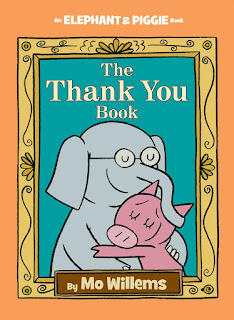


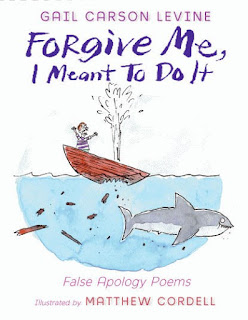
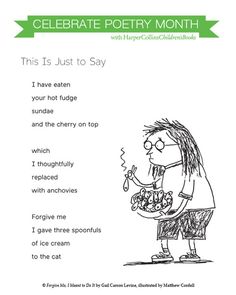




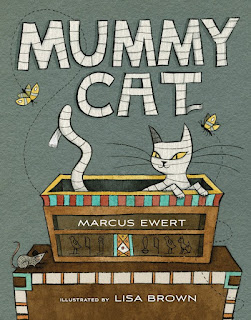































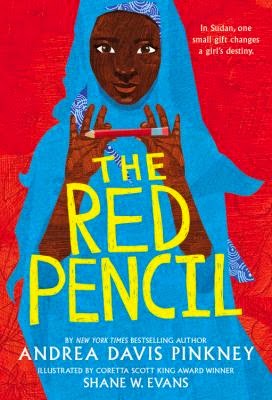



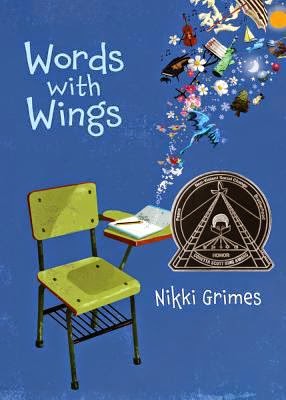













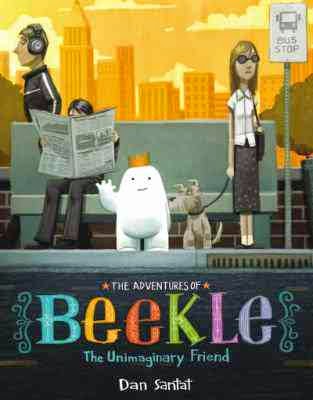


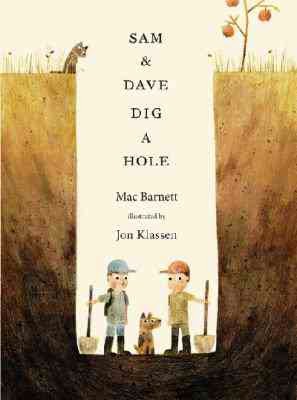


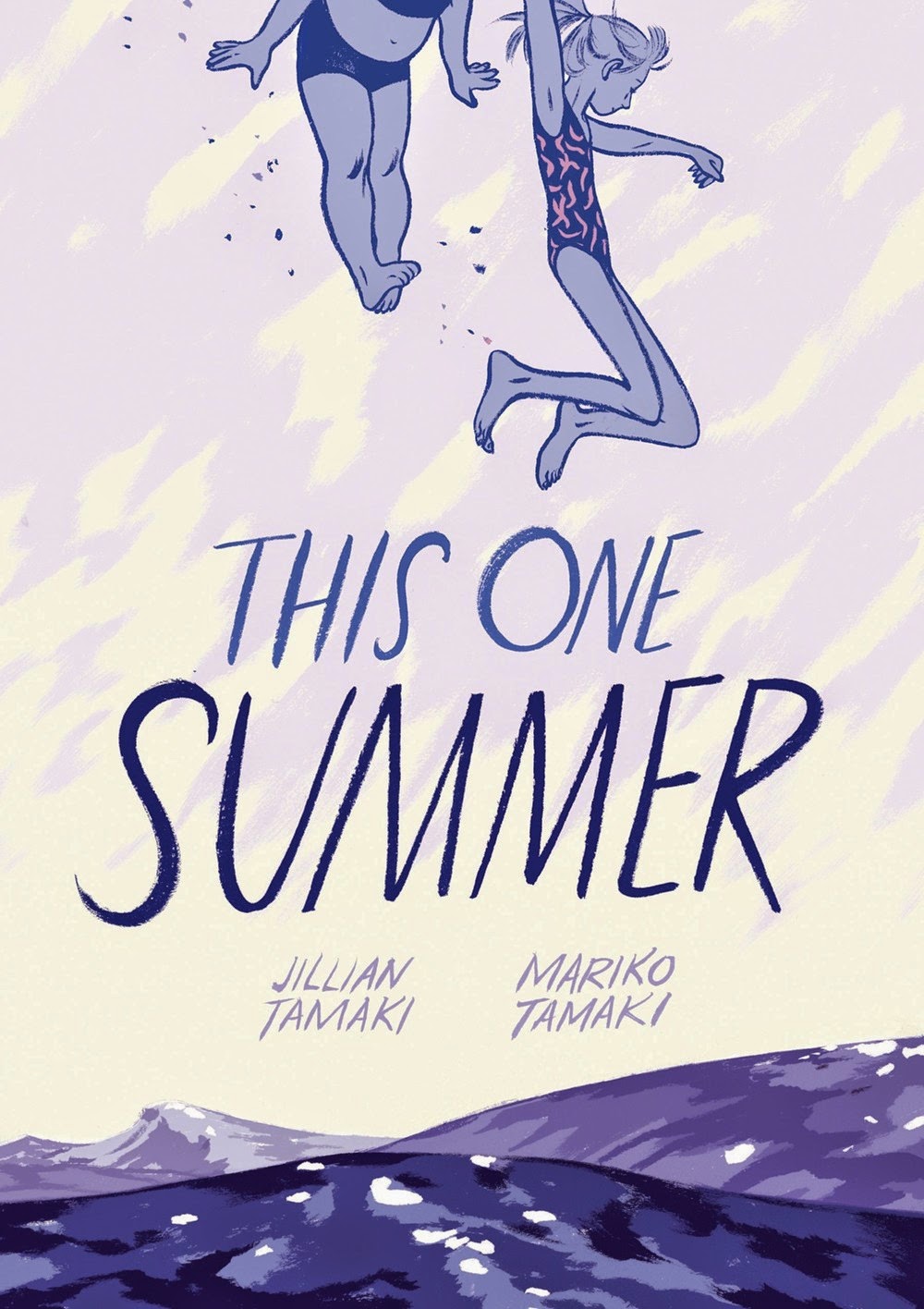
Yahoopy! I adore Best Frints in the Whole Universe and so do my 6-year-old and 3-year-old boys.
Fun thing to do: read a kid the book and then ask them whether Yelfred and Omek are boys or girls. I love that the book never lets on one way or another.
Thank you so much for these lists! It’s making every morning extra special!
The tree frog gag is hilarious. Thank you for that. And for everything else.
Love the lists! Thank you.
Thanks for all the great recs! I loved A Hungry Lion & Leave Me Alone. Very curious about Next to You, since it doesn’t have a typical funny-looking cover.
That’s part of its allure.
If my 2-year-old was picking the best book of the year it would be Poor Little Guy. It’s his favorite book and he keeps requesting it from the library. He loves it and he thinks it’s so funny. One of my favorites of the year too.
I’m also so glad to see someone else you loves Super Happy Magic Forest. So much for fantasy fans and geeky parents and their kids. I love all the many various side comments and speech bubbles. It has so much going on it’s a delight to read!
How did you know I needed a laugh? Thanks for this list and inspiring me to write a funny book of my own!